Energy efficiency is a top priority for many architects, but Scott Rodwin, founder of Rodwin Architecture, seamlessly blends green building techniques with elegant contemporary aesthetics to design breathtaking residential and commercial buildings.
His Colorado-based firm is responsible for the creation of multiple near net-zero energy homes, and makes energy efficiency a priority in all of its structures that shine against the mountainous landscape.
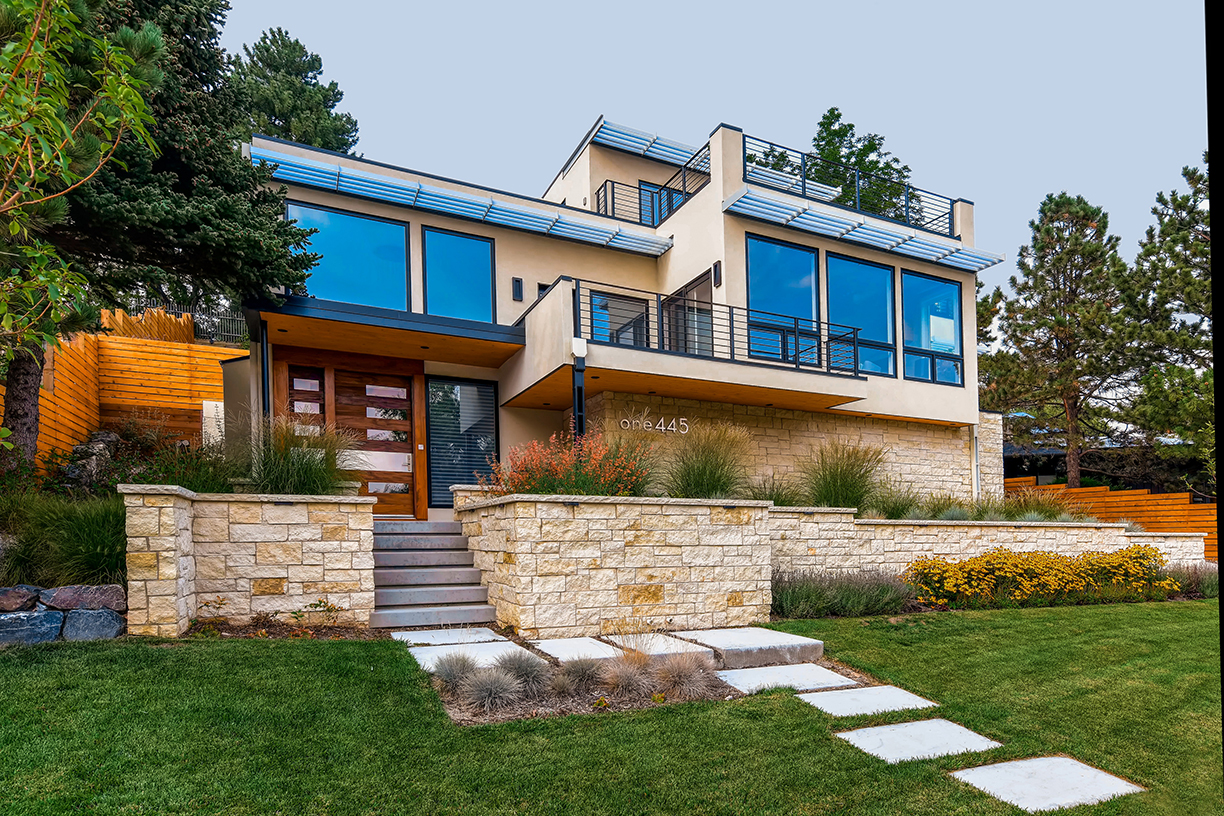
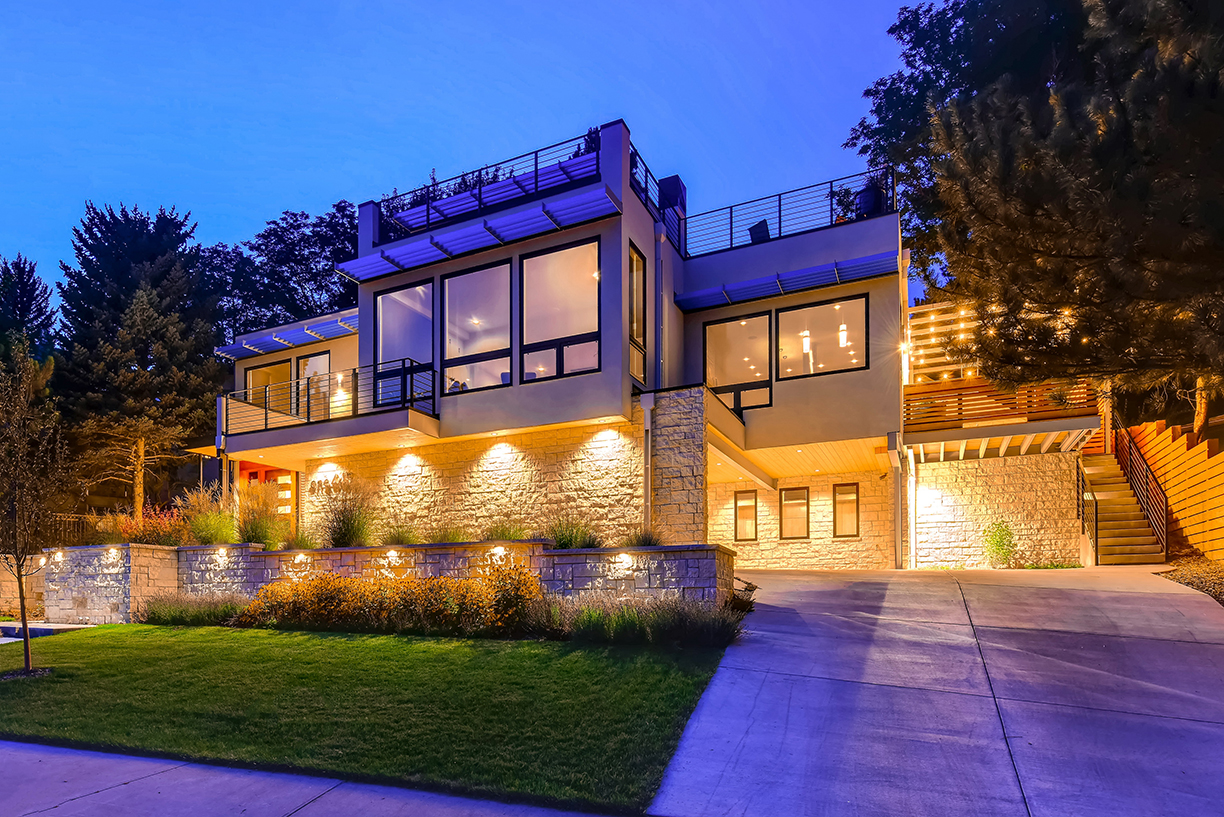
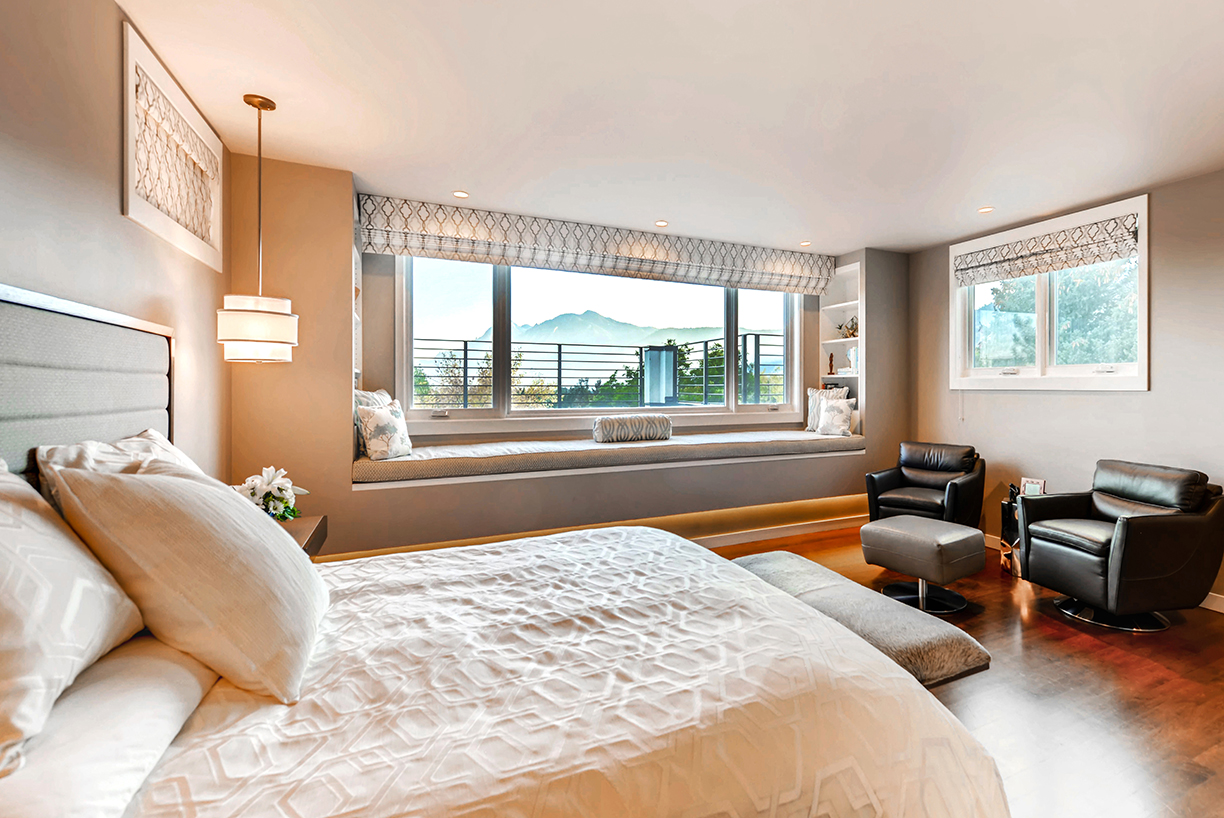
Among the projects that the Rodwin Architecture team has completed, “Deck House” stands out as an imaginative and whimsical hillside residence.
The 4,200 square foot home, which was originally built in the 1970s, was completely remodeled by Rodwin Architecture and Skycastle Construction. The home’s previously choppy and confined floor plan was switched out for a brighter, more airy design with new views of the surrounding mountains, higher ceilings and of course some added outdoor decks.
There are plenty of places to entertain in Deck House, including the elegant dining room and large great room, which are anchored by a double-sided gas fireplace. Hosting social events at Deck House is made even easier by the home’s gourmet kitchen, complete with a bright breakfast nook, and a jewel-box wet bar, accessible behind a custom barn door.
Deck House features several quirky amenities that delight homeowners and visitors of all ages. Next to the home’s great room is a raised platform bed called a “bonco,” which serves as a cozy reading nook. The bonco has a hidden door that leads to a secret playroom for the kids of the house, but adults can enjoy some of the home’s secret features too. In the master bathroom, there is a secret window that offers stunning views of the Flatirons, and there is a hidden laundry chute in the main hallway that is concealed by a picture frame.
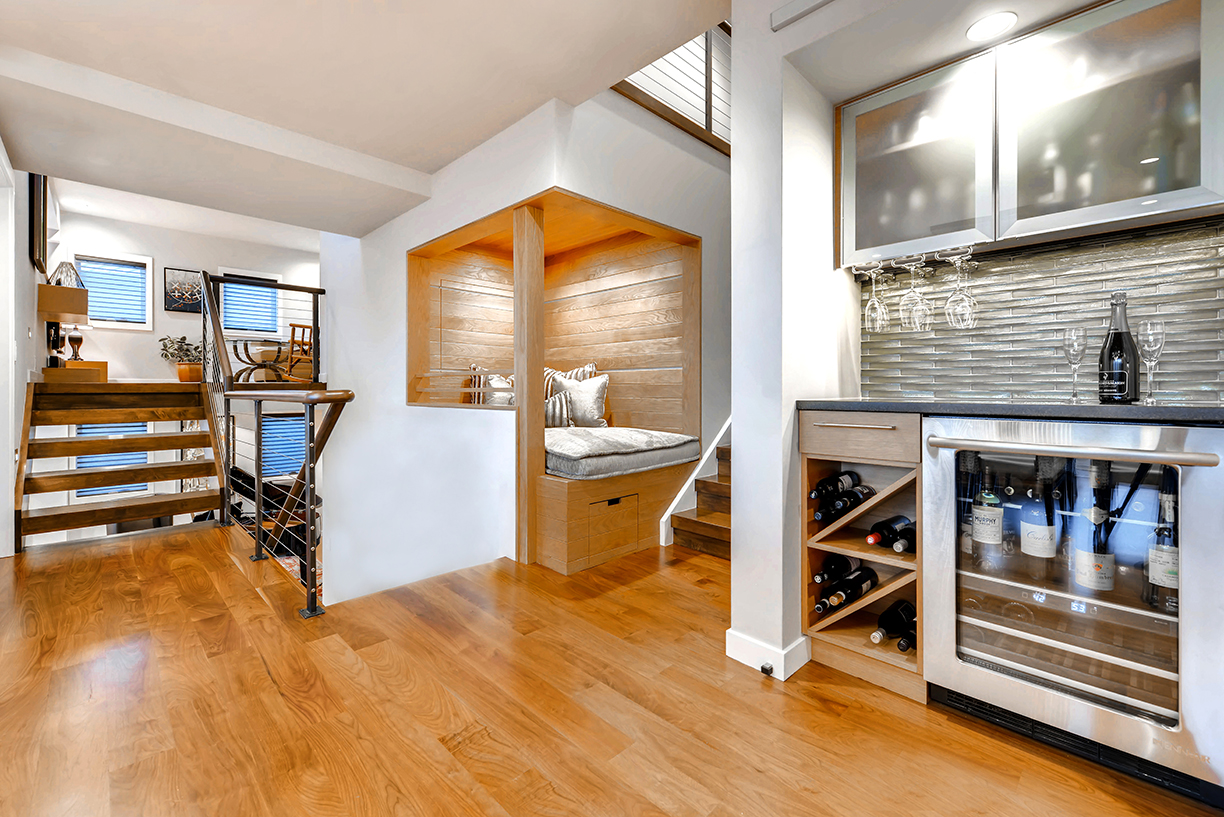
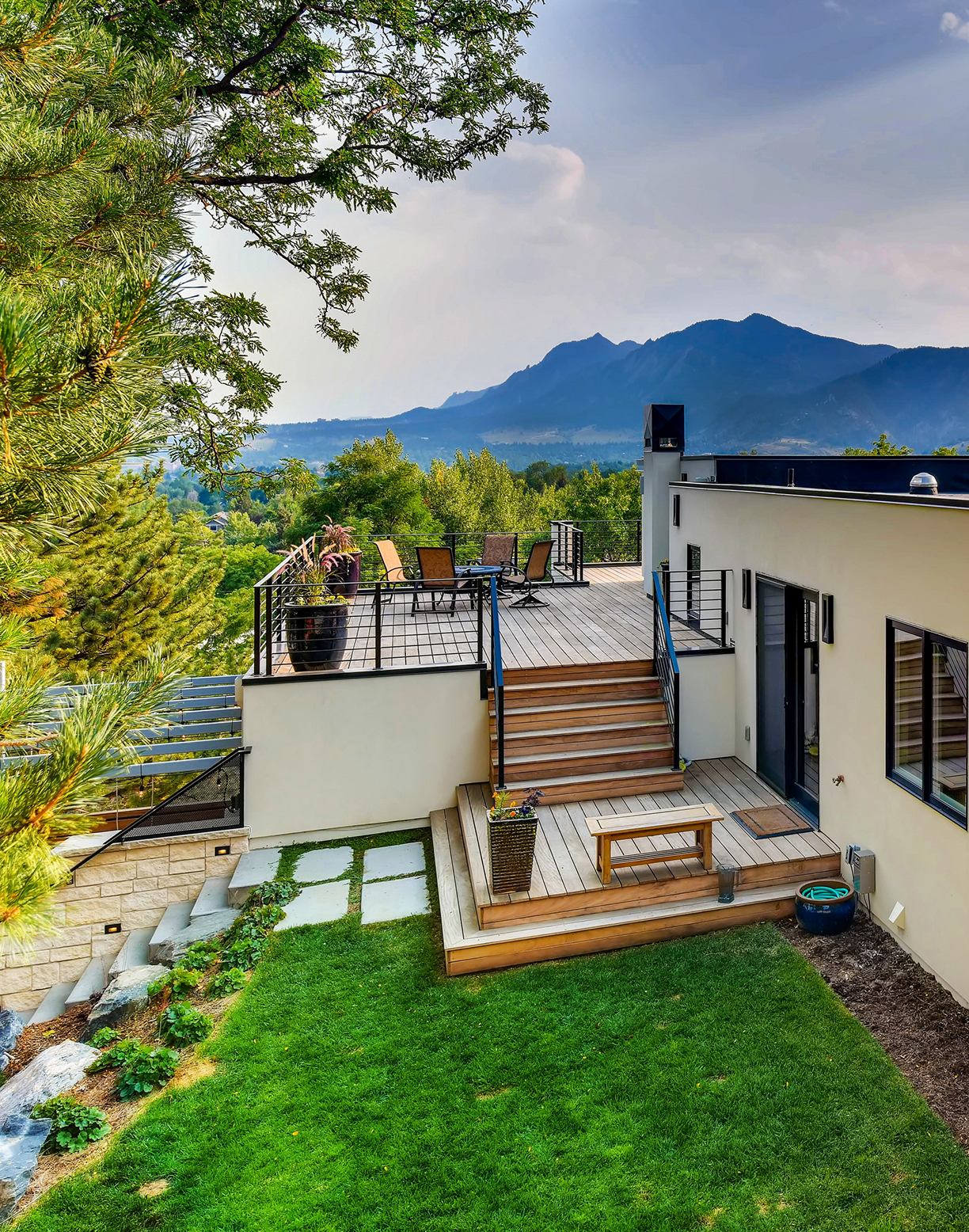
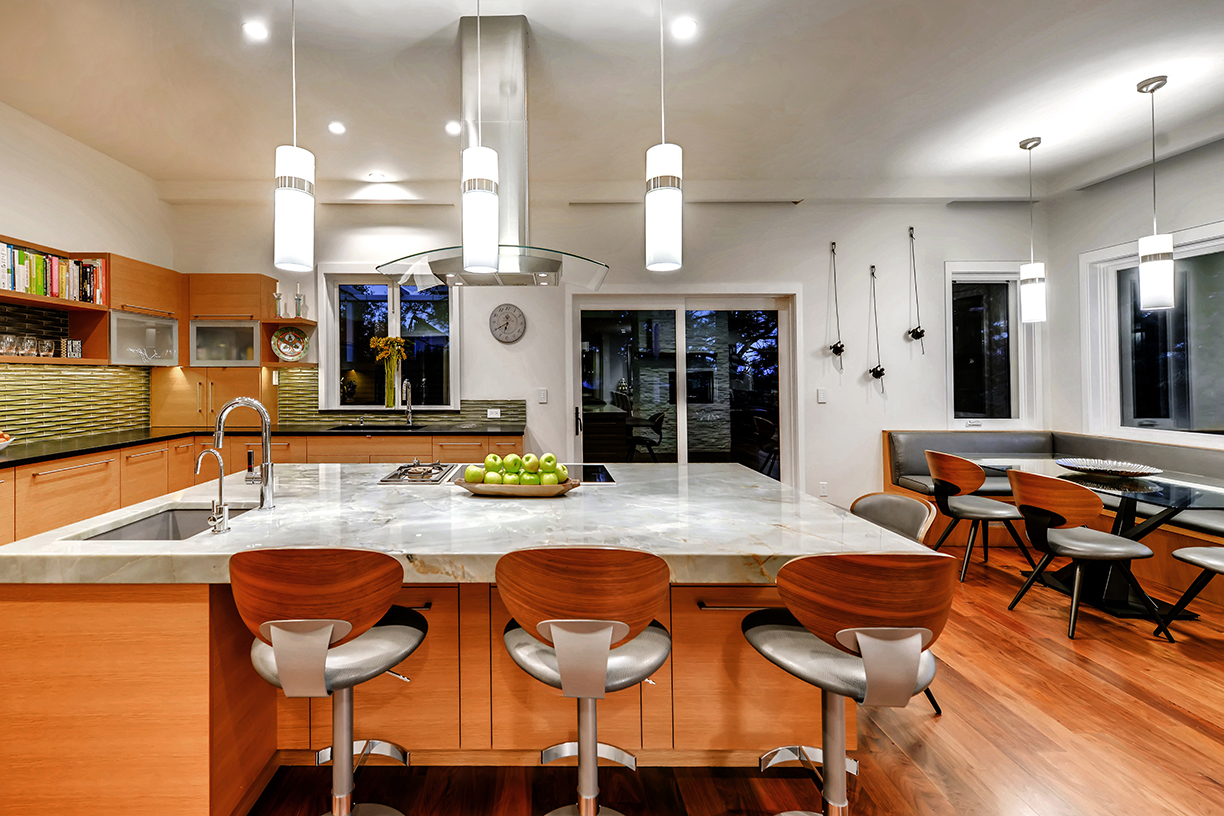
The home’s settings are adjusted to the owner’s liking via smart home technology, while passive solar design, LED lights, high-efficiency HVAC and “Tuned” Energy Star windows help Deck House score high in energy efficiency.
Deck House is one of many dreamy Colorado creations for Rodwin Architecture and Skycastle Construction. However, the project stands out for its transformation into a sunny, expansive home rich in mountain views that maintains hidden treasures from its past.
Photos courtesy of Scott Rodwin.
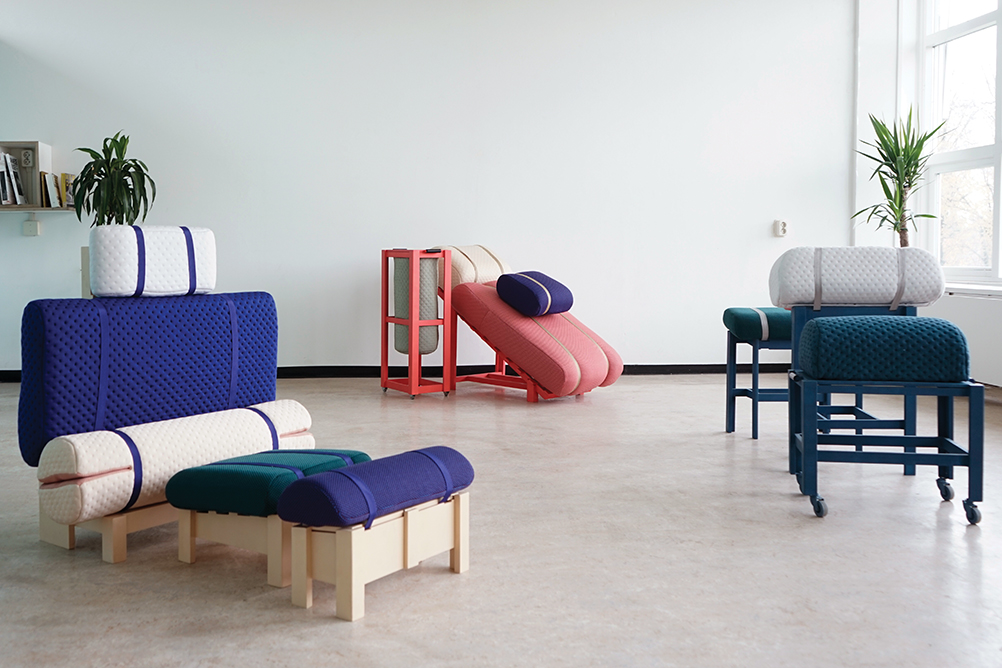
How people can become more productive and creative when working from the comfort of their bed.
For Geoffrey Pascal, furniture design was one aspect of design that came naturally with a sense of joy and fulfillment. It allowed him to delve into his creative side and construct playful pieces that served a purpose.
For his latest project, called Grafeiophobia, Pascal wanted to create new experiences within the office environment by improving the modularity and comfort of furniture.
Each of these pieces offer a different position to support different postures, removing the need for a desk. And though grafeiophobia technically means “a fear of desks,” these pieces are in fact inspired by Pascal’s own struggles with productivity and how typical office spaces aren’t as welcoming. “My inspiration came from my own problems with working, I was feeling as if I was forced to work, and I decided to change that,” he says. In turn, these pieces demonstrate how people can become more productive and creative when working from the comfort of their bed.
The project is composed of three pieces of furniture: Basic Besk, Triclinium Gum and the Flying Man. Their design, according to Pascal, was thought out to support what NASA researchers have found to be the “Neutral Body Posture,” as in the posture the human body naturally assume in microgravity.What helps make these pieces stand out, aside from the unique design, is the dynamism each piece evokes, as well as the colors that give a youthful, almost playful character.
In contrast to a classic chair and desk, the design of the Grafeiophobia furniture is meant to distribute a worker’s body weight across multiple support points, making it less stressful on the lower back, arms and shoulders. The variety and modularity of the furniture also allows you to change postures in order to maintain focus and reduce boredom.
“There are different ways of working, and people have different needs,” Pascal says, further noting that Grafeiophobia breaks the norm of office furniture and “opens people’s minds to what it is to work.”
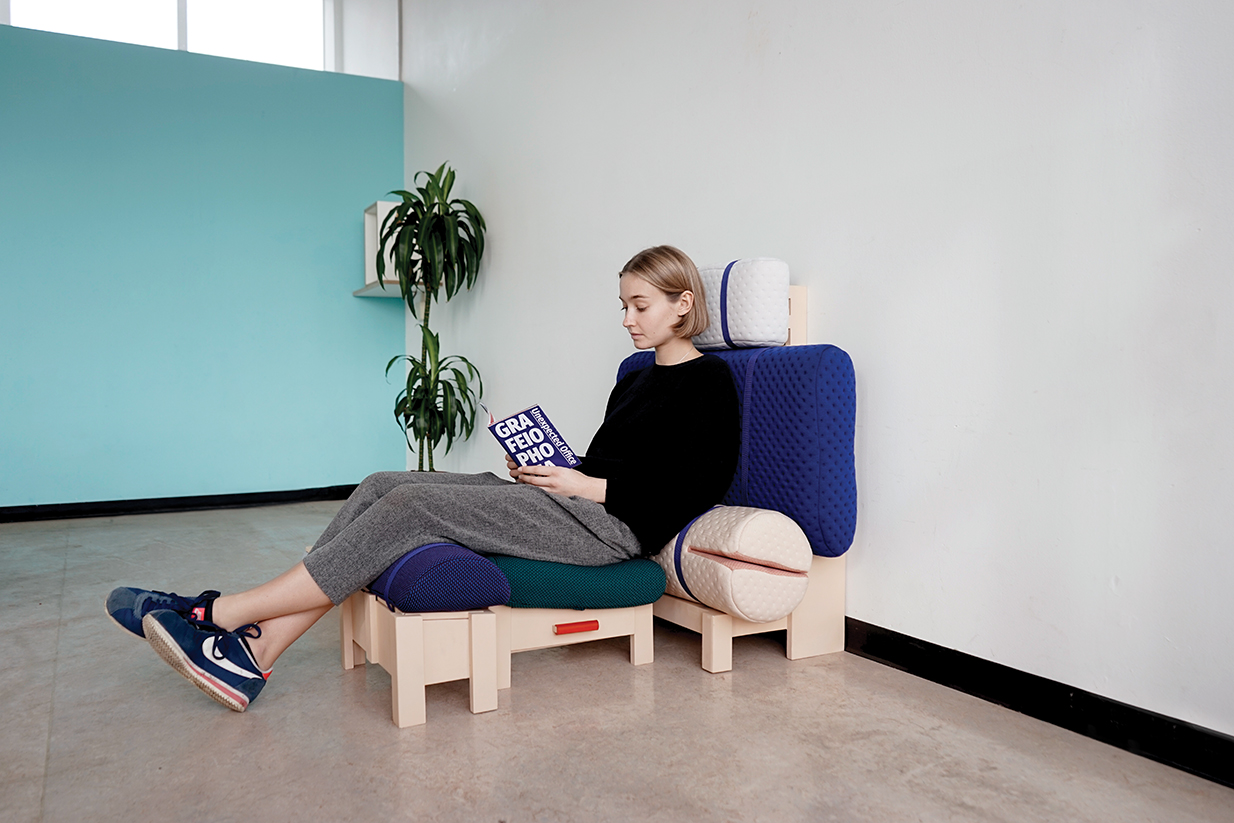
Basic Besk
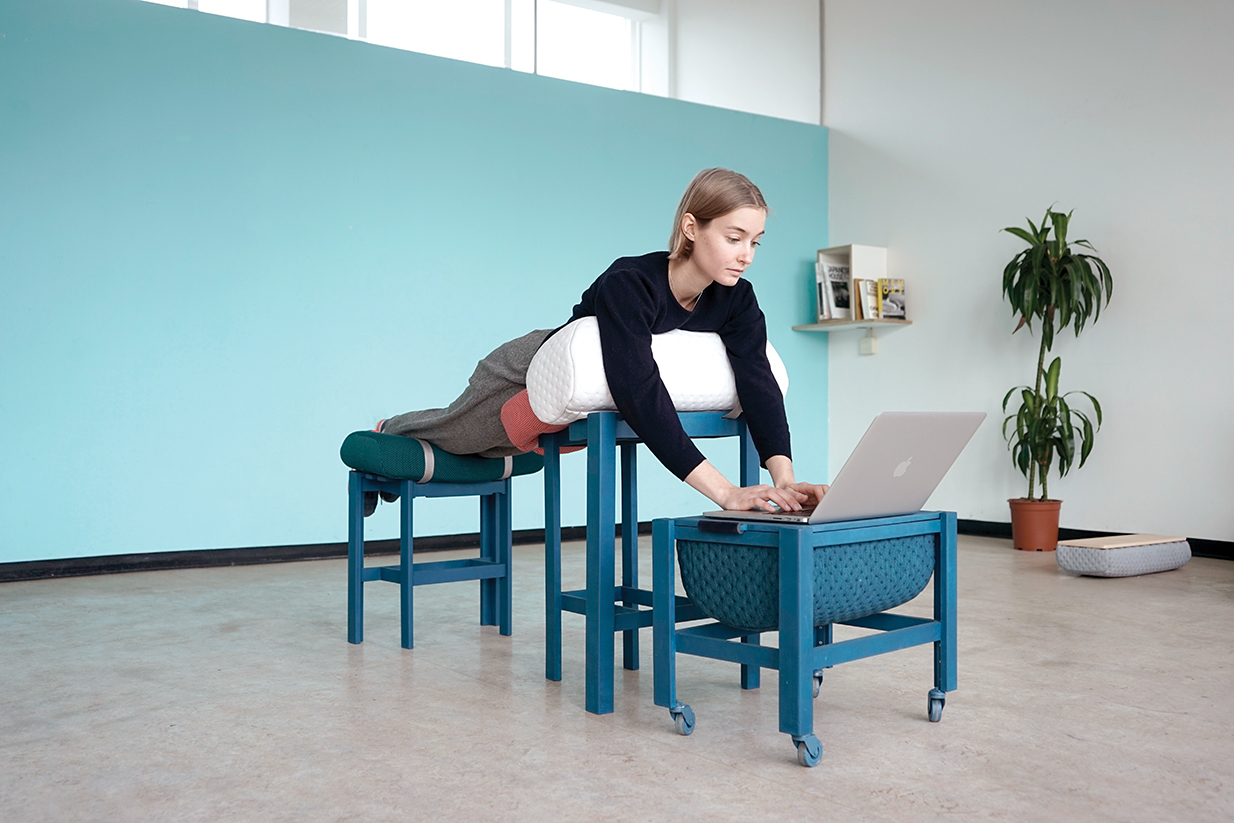
Flying Man
All photos courtesy Geoffrey Pascal.
Gather around the fireplace and embrace the comfort of warmth and fresh designs with these fireplace trends.
The fireplace is so much more than an accent today. A crackling fire has become a central point of design in some rooms, a conversation starter, and a gathering place within the home. Transform your home with these stylish and modern trends.
Don’t Be a Square
There are endless opportunities for creativity when it comes to fireplaces. The time for traditional fireplaces that are built of bricks and right angles is officially over. Embrace the variety of shapes to choose from, including round fireplaces. This stunning circular fireplace is eye-catching and adds to the warm and inviting atmosphere. The placement, color, and overall style produces an unforgettable element in this space.
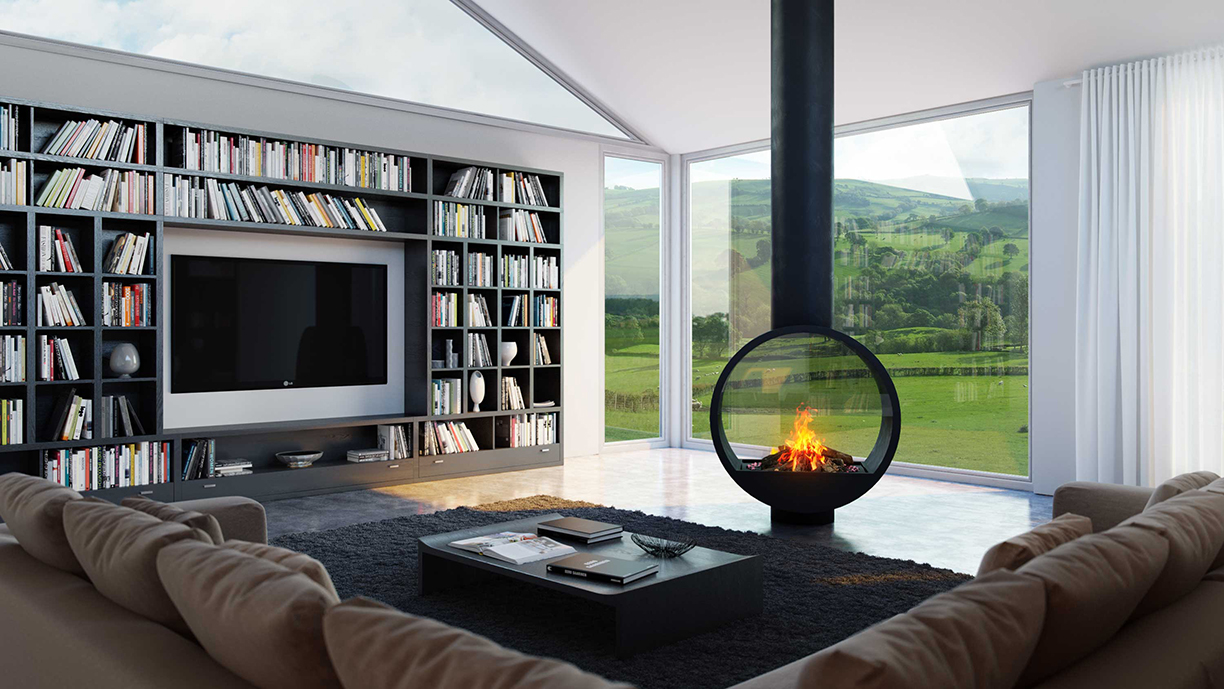
Divide Your Space
A dividing wall or partial wall is the perfect place for a fireplace. Adding a component like this simultaneously separates the rooms and brings it together. The coziness of the fireplace easily spreads to both areas. This trend is also the answer for those struggling to spice up an otherwise bland dividing wall. Avoid overwhelming the space by keeping the fireplace low to the ground and subtle.
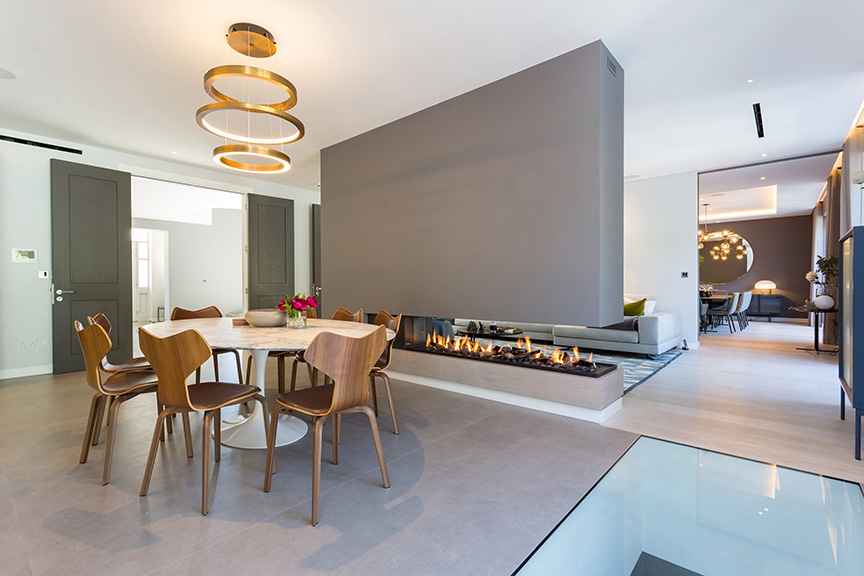
Make it a Focal Point
A fireplace doesn’t have to blend in to be functional and beautiful. Whether guests are settling down for a movie night or assembling with some wine and good conversation, it is increasingly popular to make your fireplace the central point in a room. This type of fireplace will not only attract guests but is bound to start a conversation. Is there anything more relaxing than an afternoon around the fire? Don’t be afraid to make your fireplace really stand out!
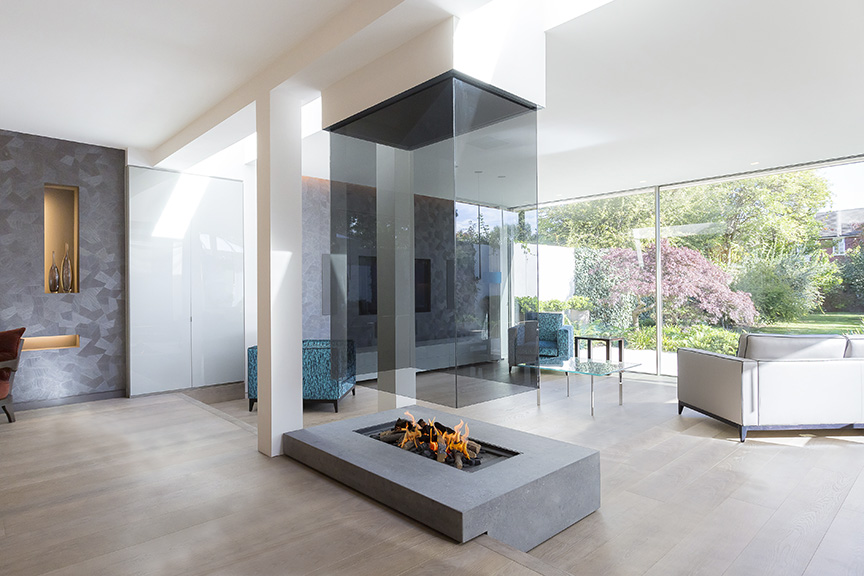
A Subtle Spark
If your fireplace isn’t a large part of your space for most of the year, then a subtle addition can be as equally appealing. A smaller element that is close to the ground could be the perfect touch of warmth that you’re craving. This design is grand without overpowering the space.
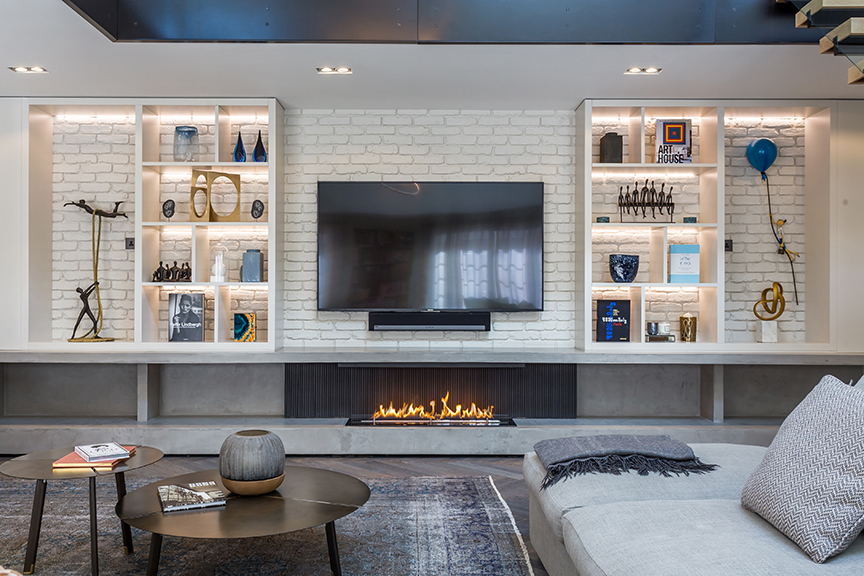
Visit https://modusfireplaces.com/ for more of their luxury fireplace collection!
Photos courtesy of Modus Fireplaces
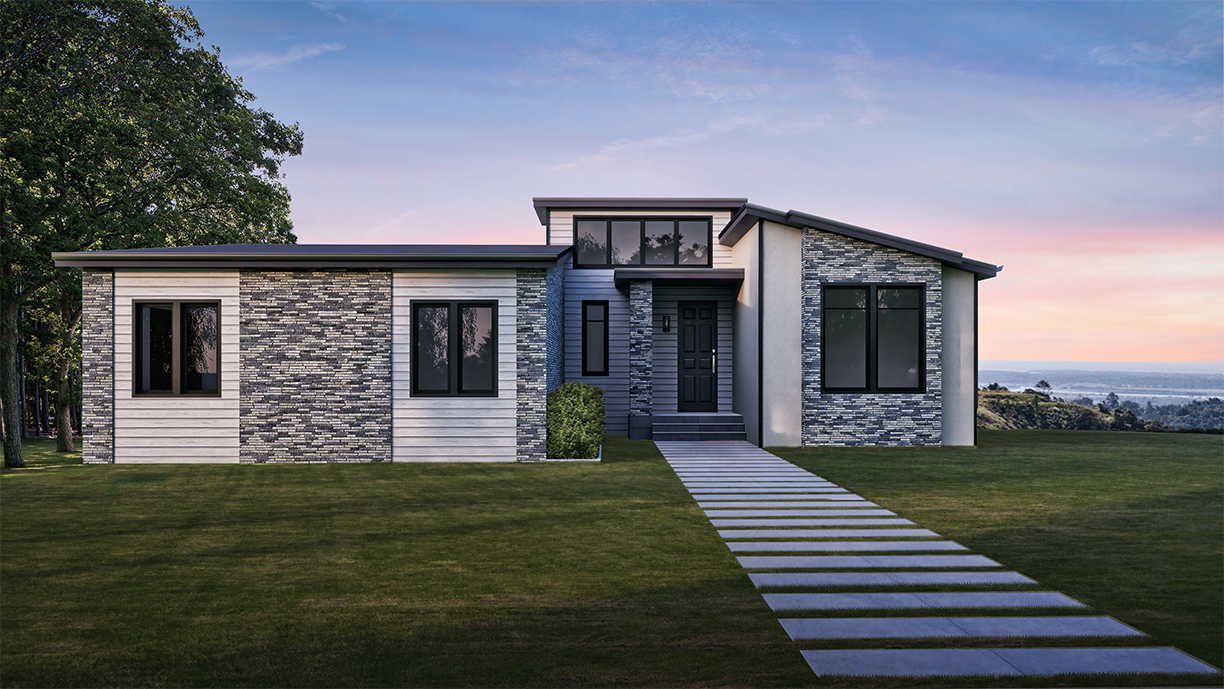
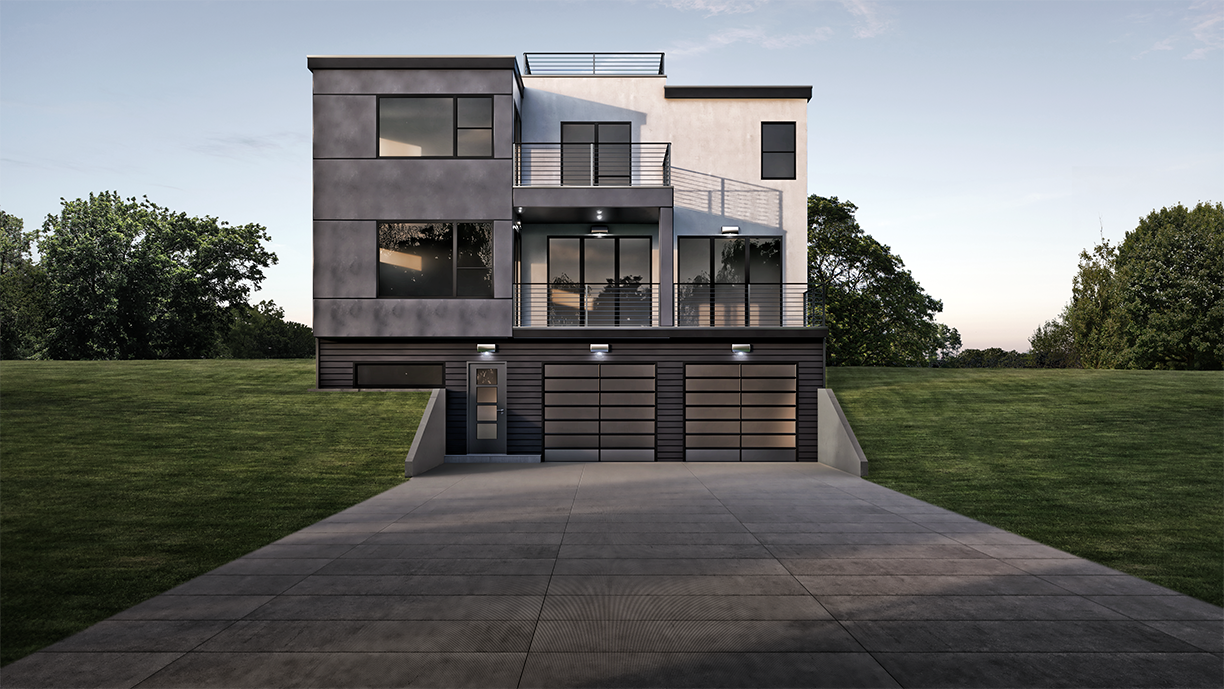
Inside the S2A Modular Megafactory — a one-of-a-kind controlled environment in which both commercial and residential buildings are constructed in modules — the nation’s first electrically self-sustaining, custom luxury homes are being developed.
Known as the #GreenLuxHome, these world-class residences are giving new meaning to sustainable living.
Green Lux Home buyers can choose between 35 pre-designed floor plans, or design their own living space. The homes are constructed in less than six weeks after the designs are chosen and the plans are approved. Each home is customized according to the buyer’s specifications, including the home’s pre-installed state-of-the-art appliances and smartphone-controlled settings. Despite their innovative modular construction method, the homes have foundations that are visually identical to their more traditional counterparts.
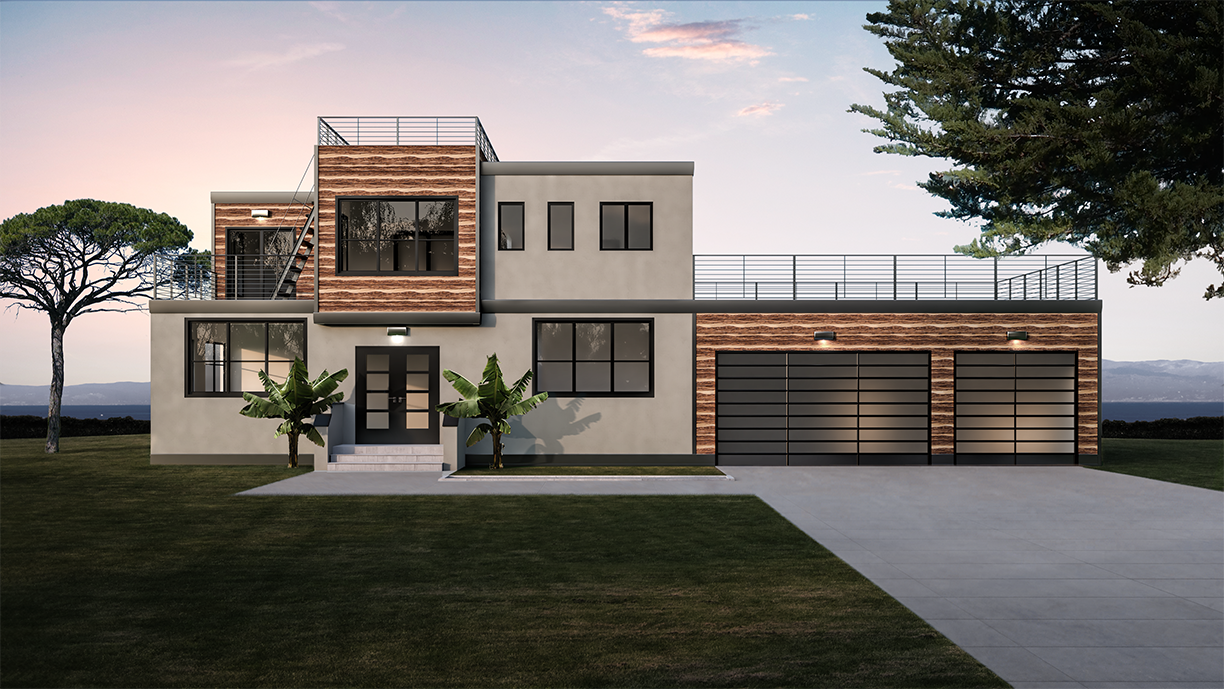
The homes exclusively rely on Tesla Powerwall units and solar panels, which eliminate the cost of gas, propane and/or grid-powered energy. The Tesla Powerwall is low voltage and has 100 percent off-grid capabilities. In some instances, utility companies may even pay Green Lux homeowners for their contributions to the community energy grid, since each home is connected to the grid as a backup power source.
John Rowland, co-founder and president of S2A Modular:
“A Green Lux Home saves money, time and energy, while reflecting the ultimate level of sustainability, luxurious design, high-end materials, smart-connected features and an overall better way of living. ”
The 100,000-plus square foot MegaFactory protects the projects from the elements, as the homes are constructed in dedicated indoor work pods. By moving the majority of construction indoors, S2A sets a new standard for construction speed, shifting emphasis away from mitigating outdoor complications and onto building quality.
Photos courtesy of S2A Modular.
Nature in design is a trend that has gained momentum and continued in 2019.
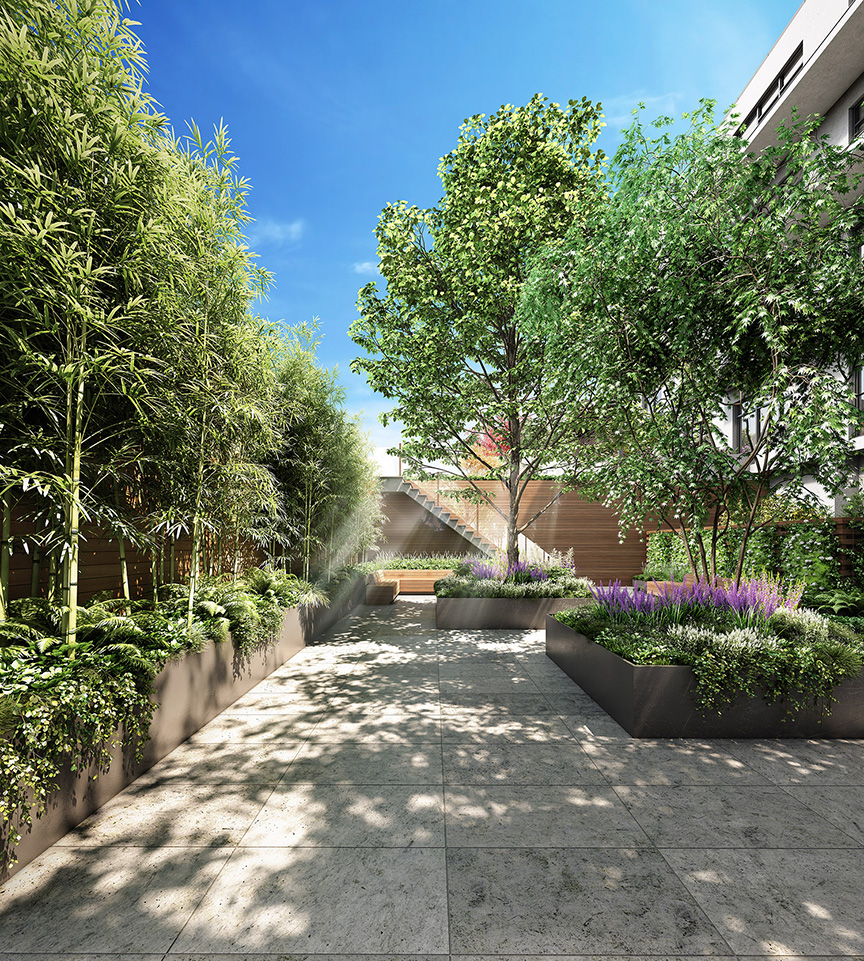
Photo courtesy of Arbor Eighteen
Finding a connection to nature may feel like an impossible task if you’re living in the city or simply lacking the space for a yard. Crowded parks and potted plants may not be the dose of nature that you are seeking. Thankfully, designers and architectures alike are taking the need for nature into consideration and incorporating green into designs and architecture — a trend that is growing in popularity. Blur the line between inside and out with these trends!
Walls of Greenery
The seamless transition between the inside and outside could make the city feel miles away. One way to make that connection is with walls of greenery and other plants, which can freshen and brighten a space. This type of addition can also soften a room that may be surrounded by concrete buildings and bustling sidewalks.
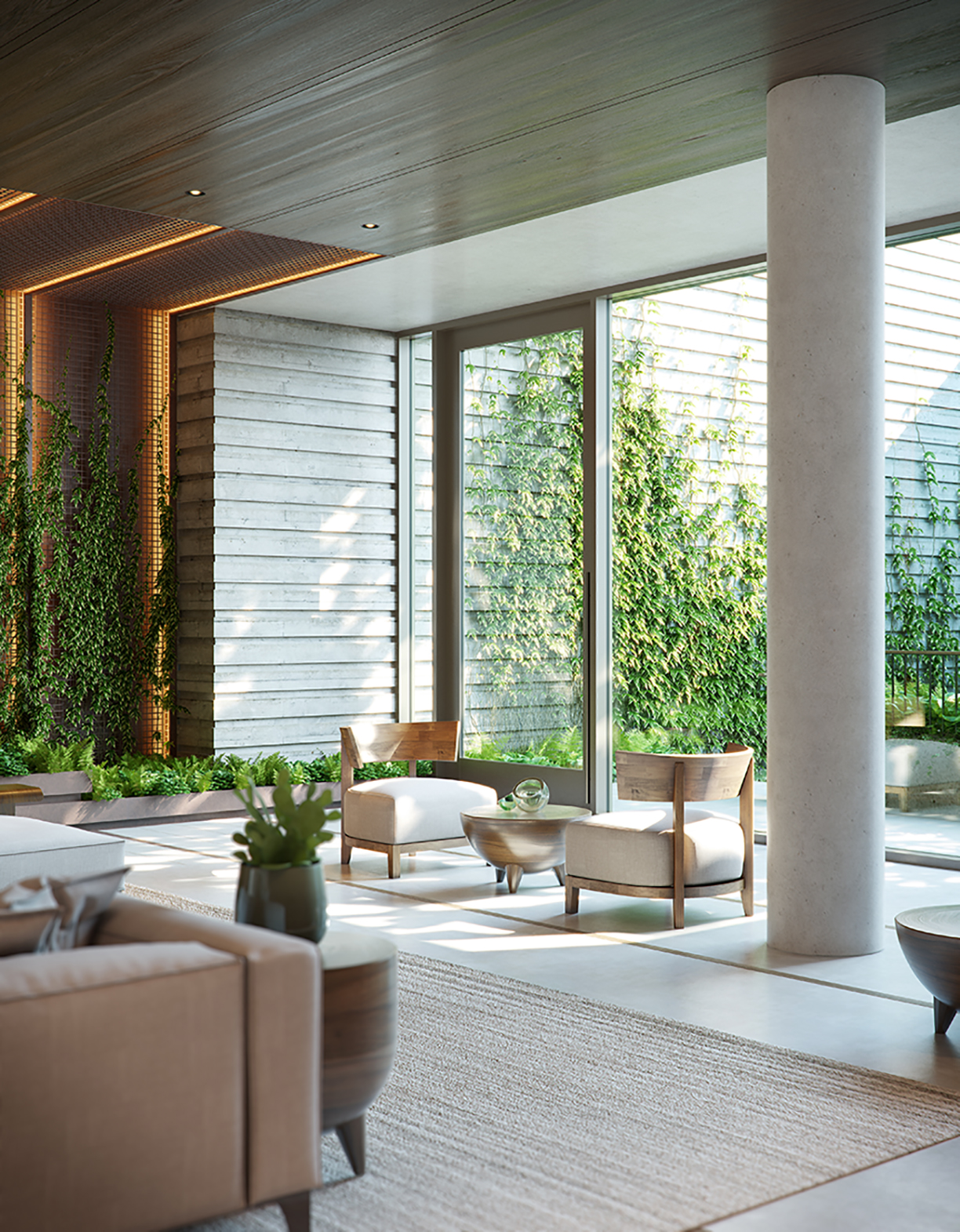
Photo courtesy of 561 Pacific
Designated Outdoor Space
City living can create a high demand for outdoor space that is tranquil and also functional. Designers are embracing the idea of green space that is outdoors and accessible. A common space that has a park-like feel has become a popular trend. The addition of natural elements brings a calming quality to an area.
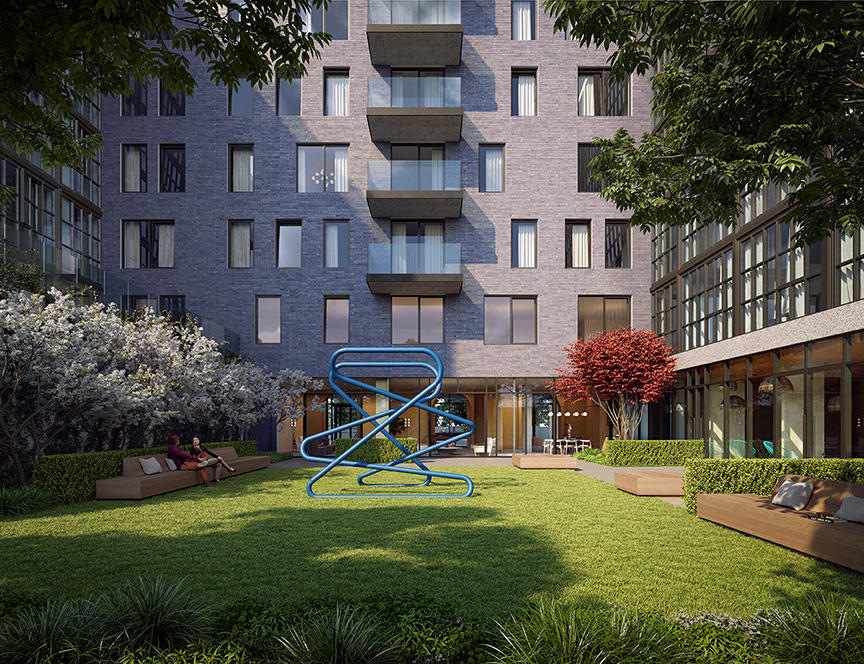
Photo courtesy of Galerie
Nature by the Poolside
Pools and spas are not an uncommon amenity for developments and resorts. However, designers and architectures are incorporating nature, such as native plants into luxury pool and spa areas to give them a softer touch. Rather than surrounding the pool with umbrellas and other structures, a few palm trees give a much more relaxed feel.
Glimpse the Outdoors
If you are lucky enough to have your own outdoor space, floor-to-ceiling windows are a way to bring the outside into your living area. Even a distant view of nature can transform the feel of your home. Walls of windows not only reveal the outdoor environment making it feel within reach but it also allows for plenty of natural light to find its way inside.
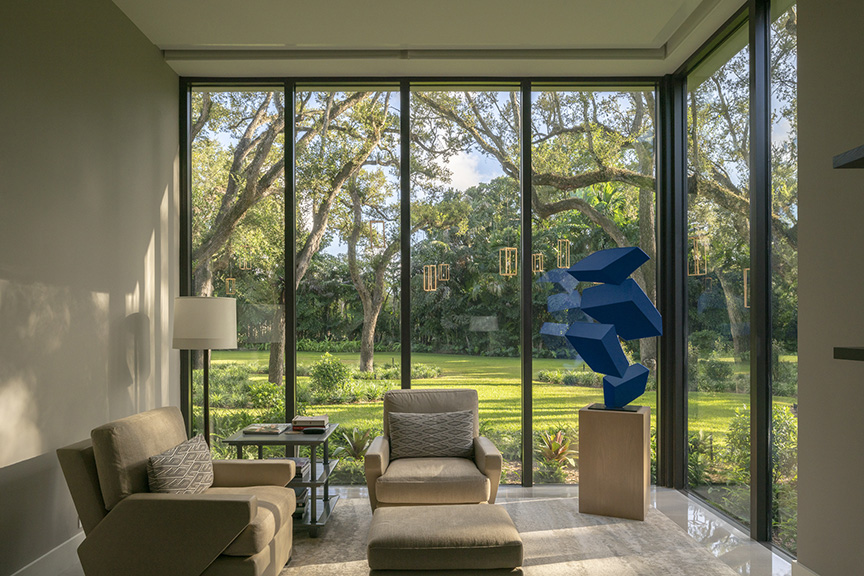
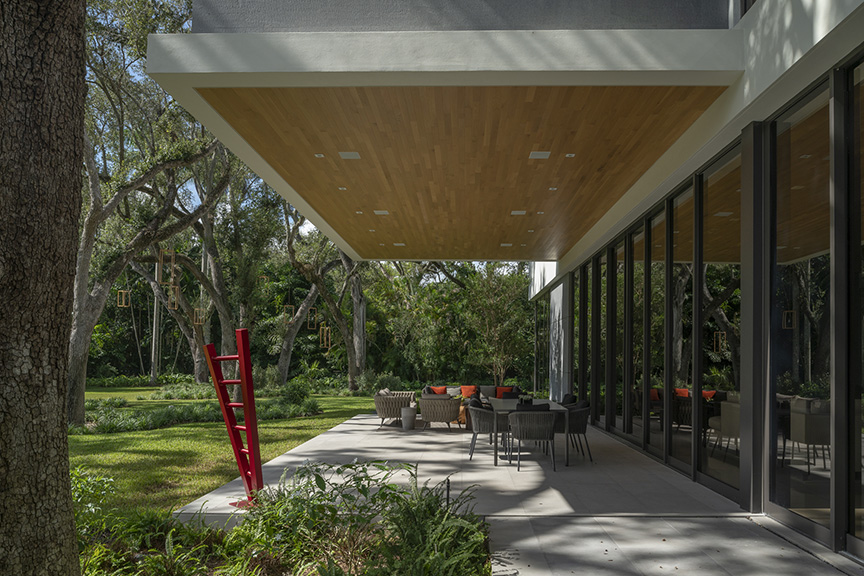
Photos courtesy of Touzet Studio
NYC projects represented by Halstead Property Development Marketing
Let delicate hues of pink, contrasting deep blues against calm gray, and relaxing greens glazes don your dinner table instead of standard dinnerware.
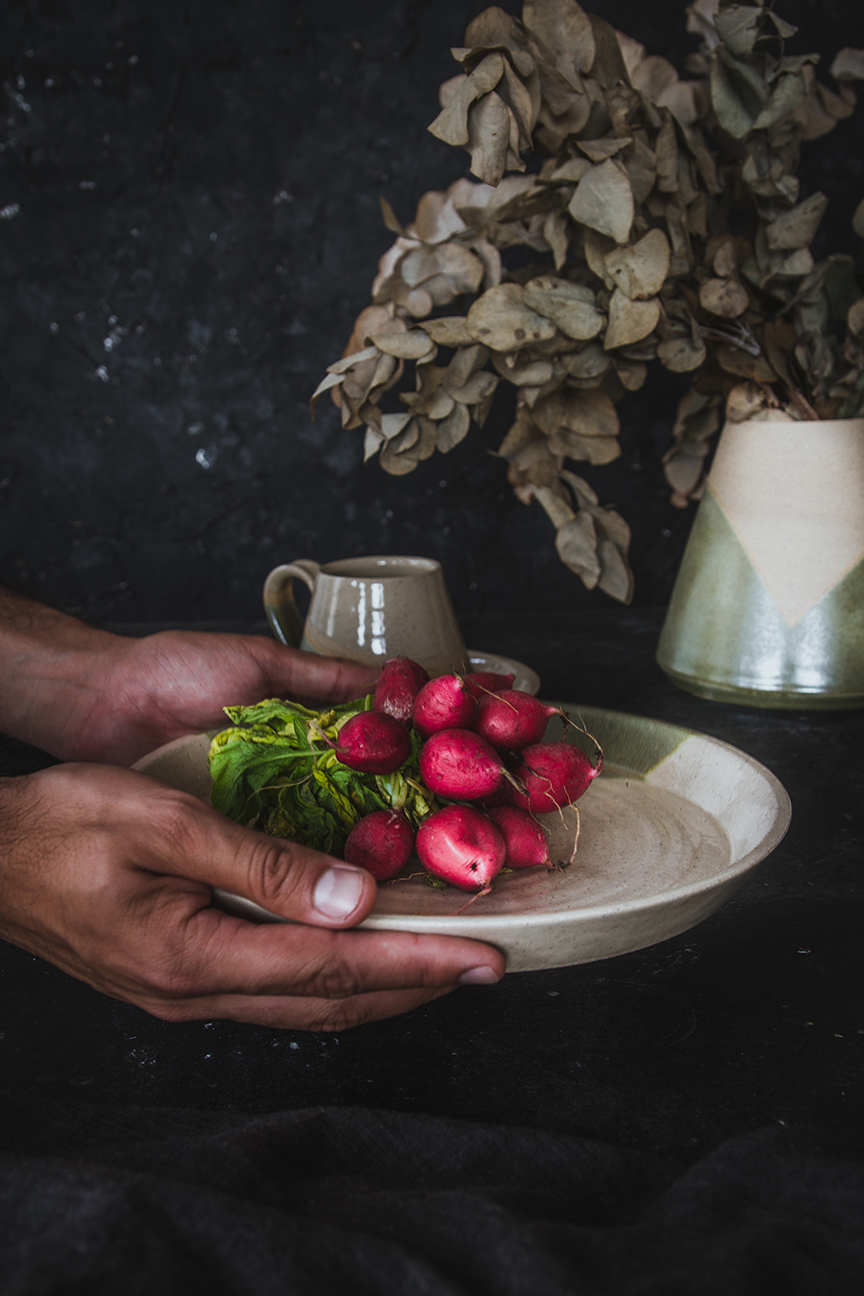
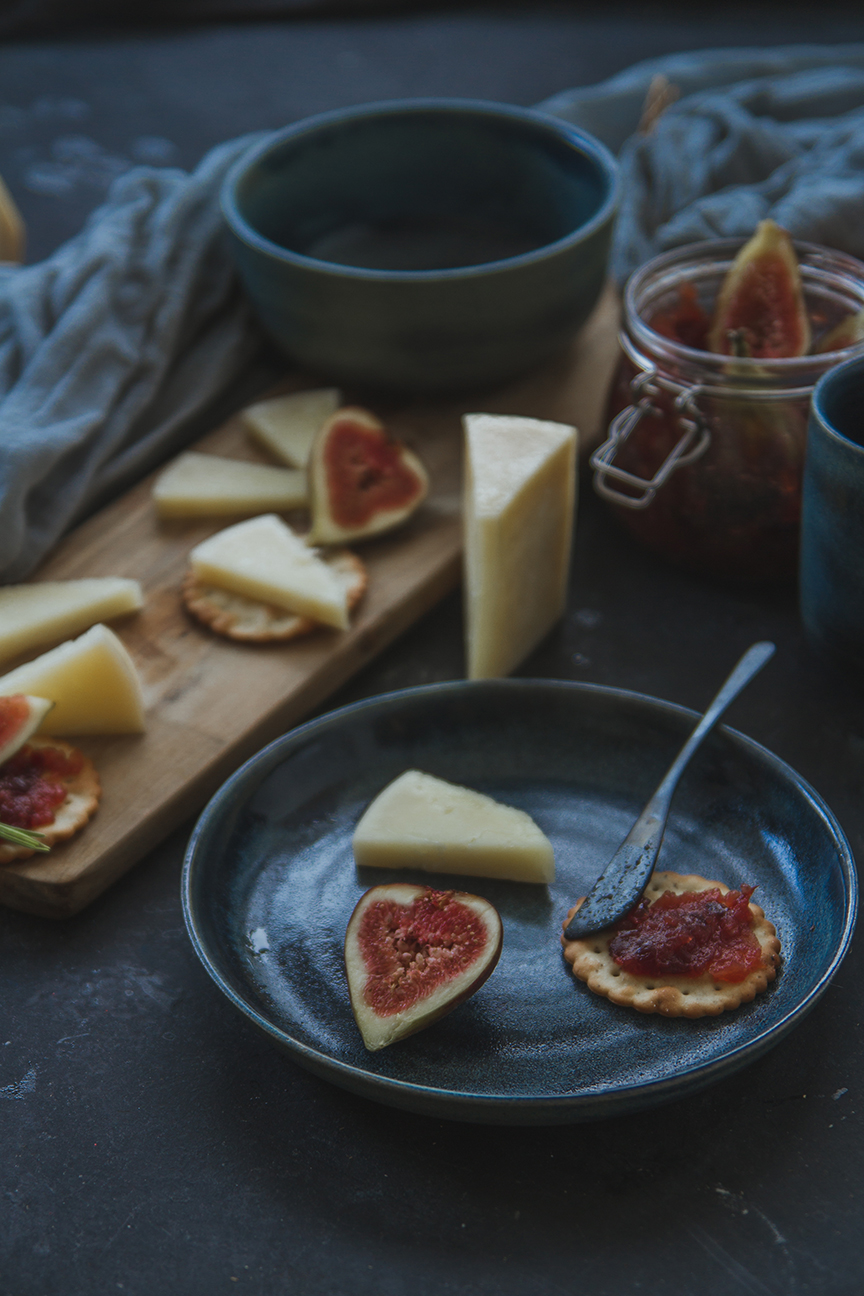
Photography by ‘The Cooking Lab’ – Grey Suit Clay
Small ceramic studios are making an impact with fun designs and a distinct unique feeling for each table. Studios such as Julie Spako’s,Grey Suit Clay, andSkandiHus in London are attracting buyers who crave handmade items you won’t find in bulk. The notion that each dish, bowl, mug or plate is one-of-a-kind makes every purchase feel personal.
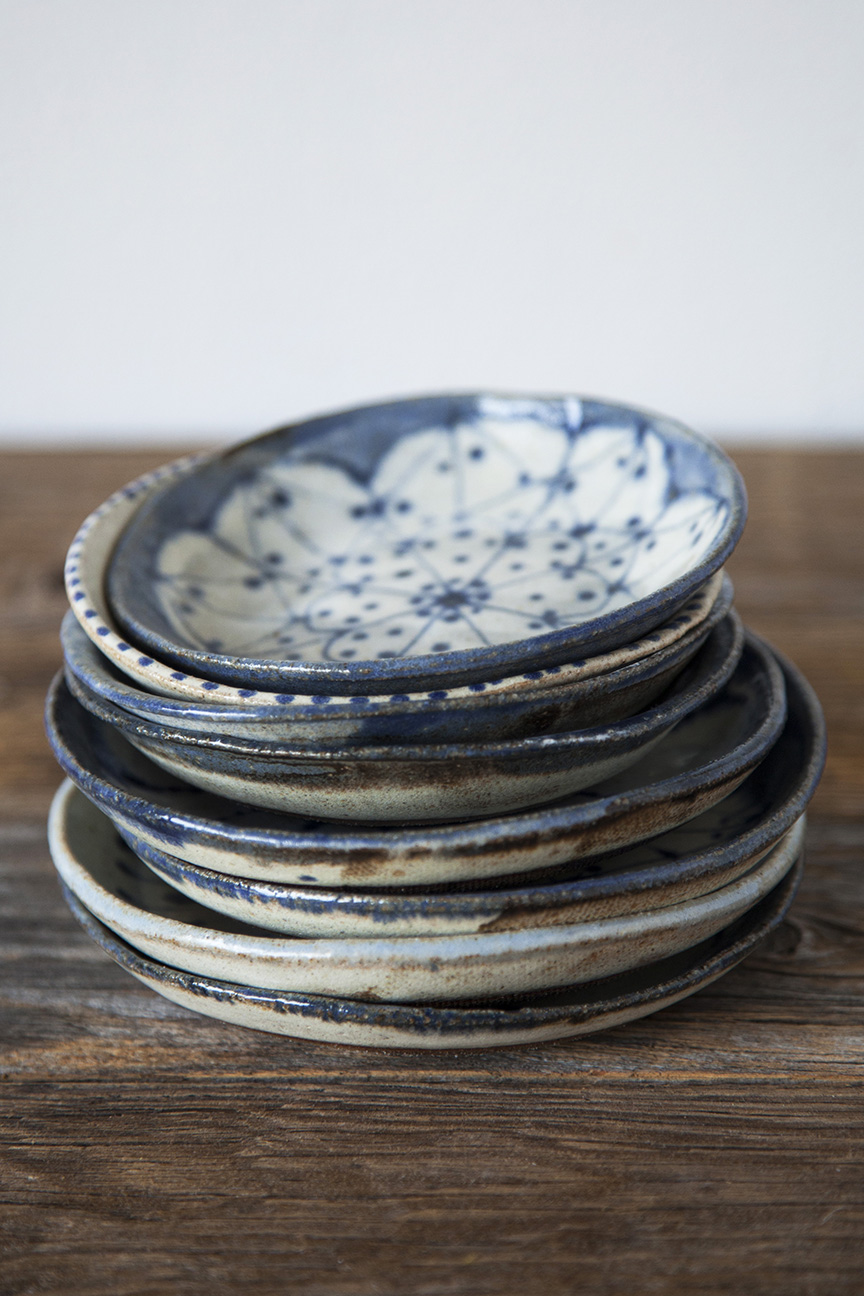
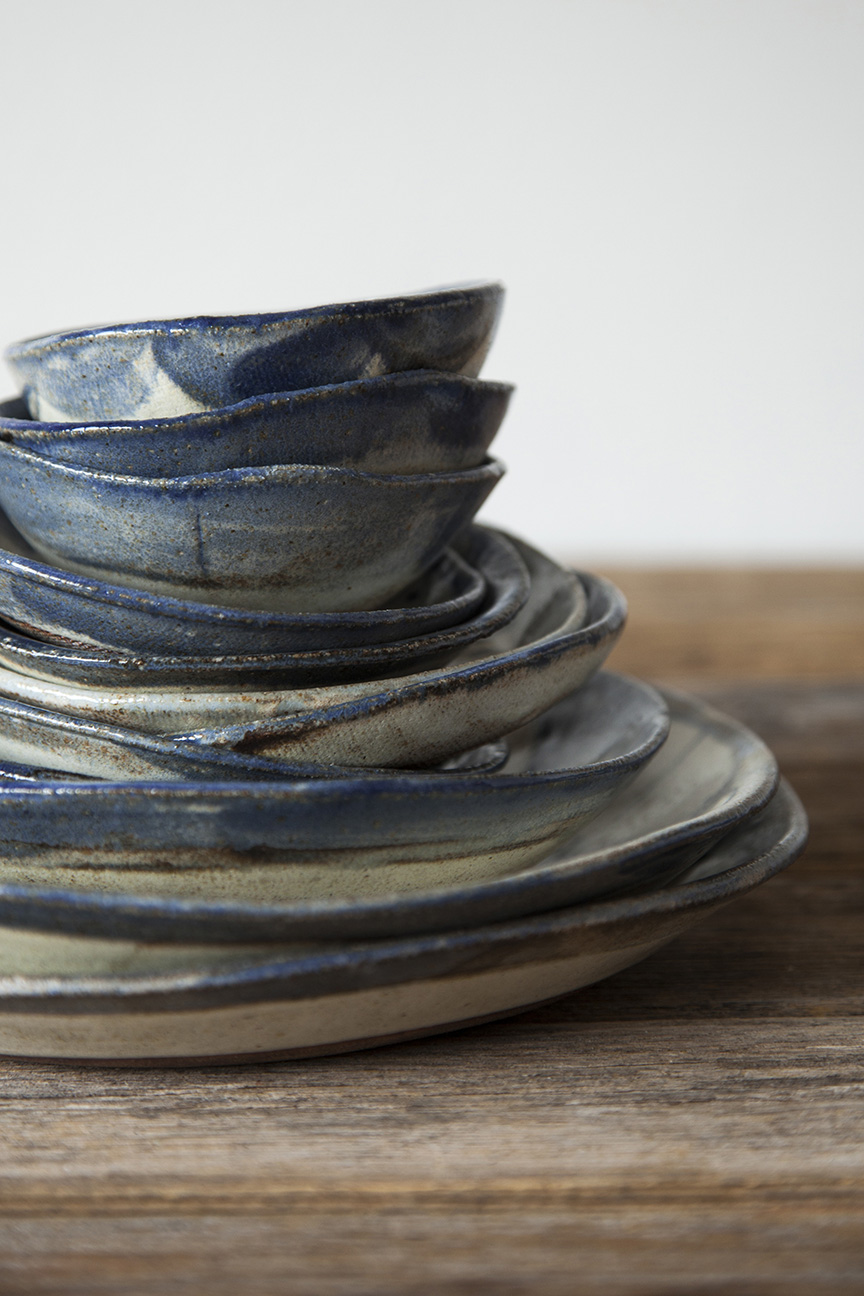
Photos by Pauline Stevens – Julie Spako
Adding handmade ceramics to your table can subtly transform a room with the creativity that comes with singular pieces. Julie Spako, who works expertly with high fire porcelain and stoneware, says “ceramic is both an ancient material and a modern one … It’s an amazing material that will outlive its maker by thousands of years but comes into being by an artist or craftsperson.” Each piece holds its own history, which brings life to any table.
These ceramic creations serve as art, but they’re also functional. “I do consider the function of my pieces as I make them, and I look forward to seeing how they are used. Some of my serving pieces are kept on the kitchen counter as catch-alls from tea bags to coffee-making supplies or in the bathroom to hold wash clothes,” says Spako.
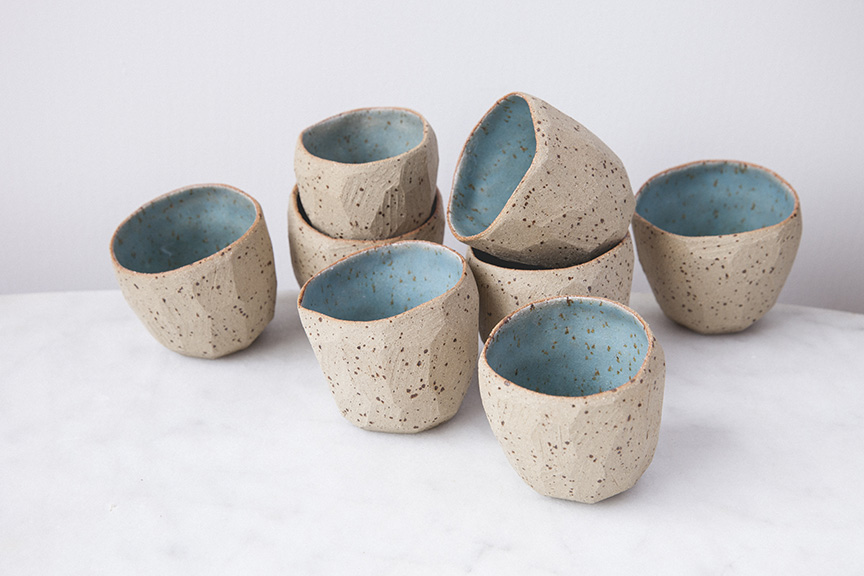

Photos by Charlie Mckay – SkandiHus
Francesca Hague, creator and owner of Grey Suit Clay also carefully considers function during the process, “I always create my pieces with the full intention of them being well used and well loved. I want them to be tactile and ergonomically pleasing in the hand whilst also showcasing a beautiful palette that works to compliment both the table it sits on as well as the food served upon it.”
Each piece is individually made and no plate, bowl, or dish is exactly the same. “Ceramic pieces are very unique in their process and finish. Being handled and molded directly from soft earth into durable, functional work — the potential for such a huge range of styles and finishes is endless,” according to Hague.
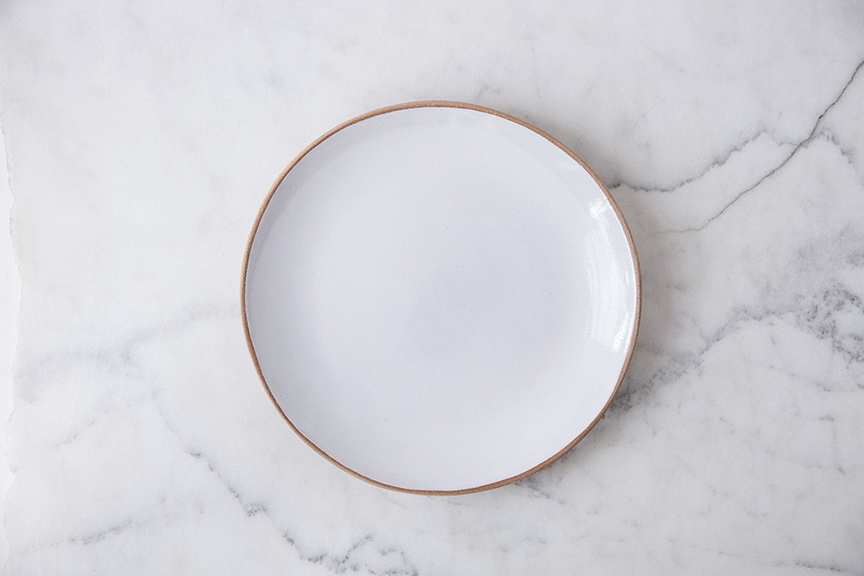
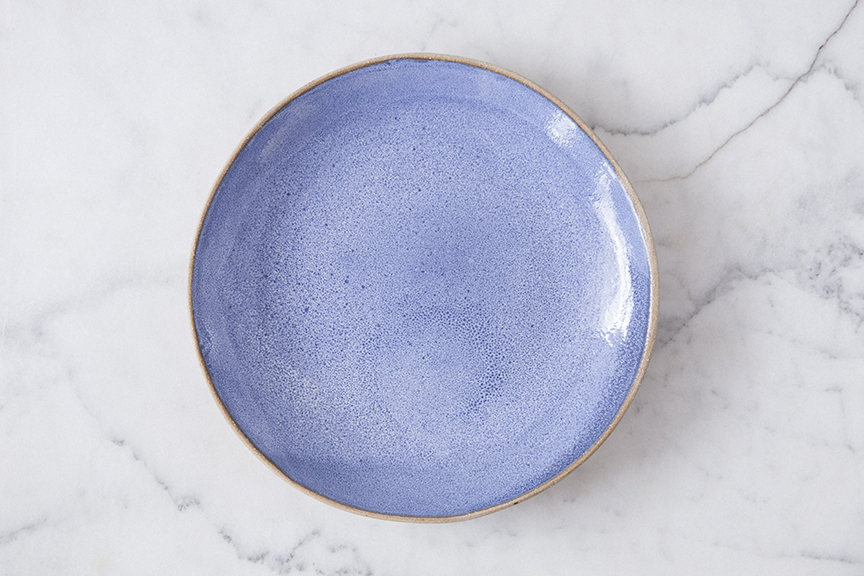
Photos by Charlie Mckay – SkandiHus
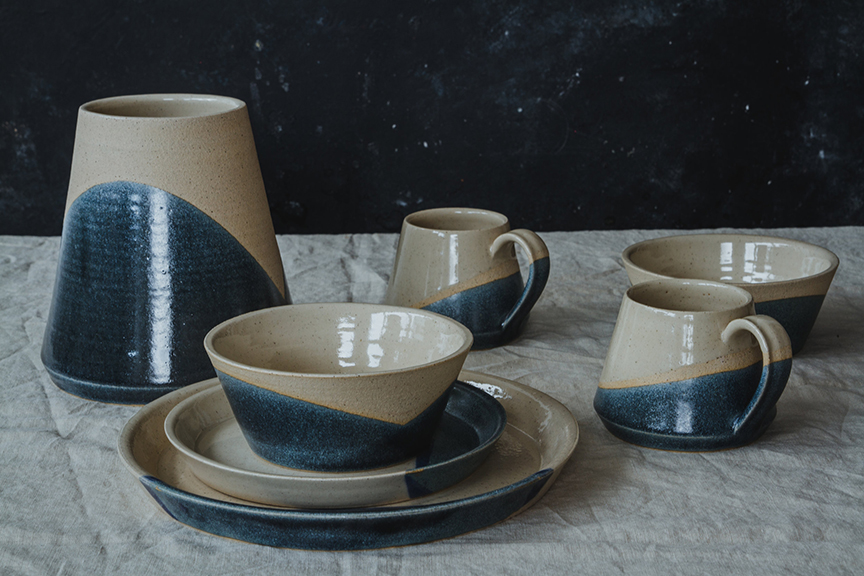
Photography by ‘The Cooking Lab’ – Grey Suit Clay

Flowers and botanicals are often viewed as a feminine concept or aesthetic, typically in design or art. Rather then let these concepts define them, female artists in history embraced the idea and contributed some of the greatest examples of botanical art, examples that are according to Marika Meyer, owner/founder of Marika Meyer Interiors and Marika Meyer Textiles, “detailed and accurate, but also beautiful and captivating.” Meyer’s appreciation for these women sparked an interest in botanical art, and then further a collection of fabric called the Flora Collection dedicated to artists in the field.
“The more I explored the history of the botanical art form, the more I learned about the role women played in the field,” Meyer says. “I felt it was important to honor both their contribution to this genre and their amazing artistry in [a] collection.” Meyer then decided, after having already designed collections inspired by her love of antiquities, to challenge herself creatively and to explore another path in textiles.
The collection is composed of three patterns, Matilda, Lilian and Beatrix, after famous female artists. Matilda Smith was a prolific illustrator in the late 19th/early 20th century that created bold, ambitious pieces that reflected her resilience to the craft, as she made some of the largest botanical works of her time.
“Lilian Snelling has been referred to as the most important British botanical artist of the first half of the 20th century,” she notes. “She completed more than 600 works in her career beginning at the Edinburgh Botanic Gardens and later with Kew Gardens.” And while many people don’t realize that in addition to being the author of some of the most beloved children’s stories, Beatrix Potter was also an accomplished artist and illustrator. “Her illustrations were just as whimsical and enchanting. That is why a petite floral seemed the perfect fit,” Meyer says.
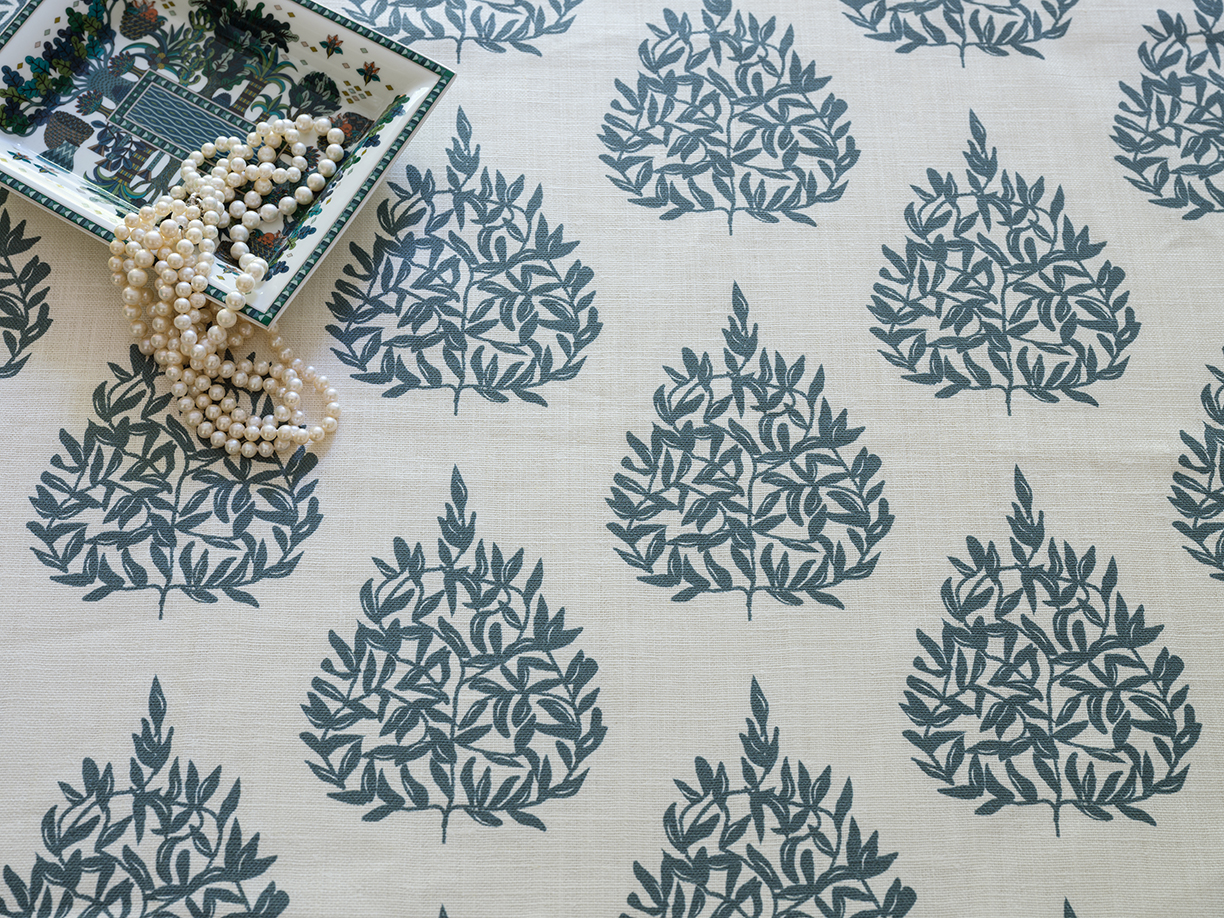
Matilda
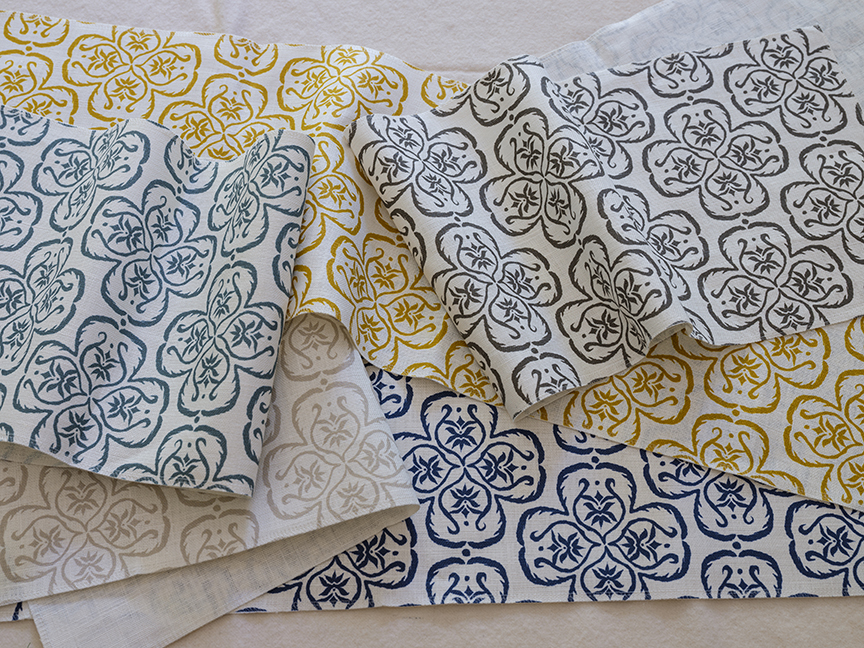
Lilian
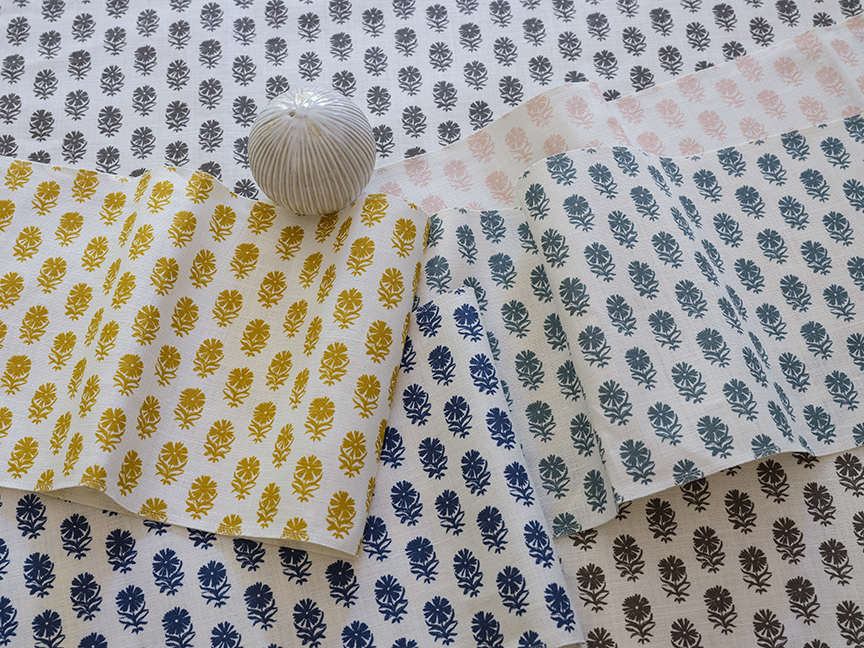
Beatrix
The work that went into the collection came from a passionate, artistic state of mind, as Meyer says she began by free hand sketching designs, leading her eventually the idea of botanical prints because of their universal beauty that transcends time.
“All of my designs are rooted in the elements of art and culture that persist throughout time,” Meyers notes, including the style/design trends of today that inspired warm colors and tones like yellow ochre, warm charcoal brown and steel green.
Ultimately, Meyer says her goal is to always to create designs that can be the foundation for any space. “As an interior designer, fabric is my starting point in any scheme. I often ask myself questions in the design process, ‘Would I use this fabric?’ ‘How would I use it?’ Any of the designs in this collection should be strong enough to act as the jumping off point for a room.” The patterns in this collection are definitely strong options that also offer an interpretation of these artists’ personality, style and significance.
Photos by Angie Seckinger
Increasingly, custom aquariums are amenities in demand by luxury homeowners, pushing specialists to create spectacular showcases.
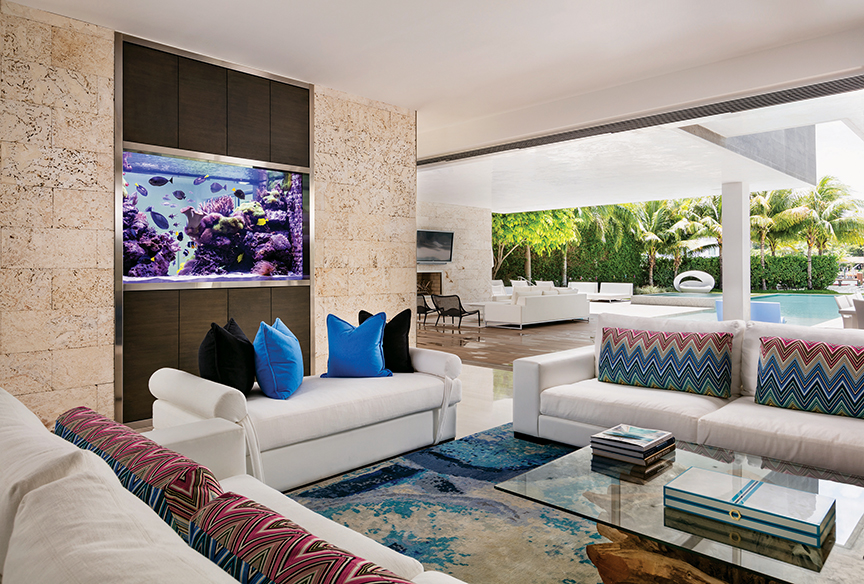
Photo © 2016 Nickolas Sargent All Rights Reserved
Observing decorative tropical fish shimmering through an artificial aquatic habitat can be mesmerizing, but new innovations and elaborate designs have made aquarium industry specialists an essential resource for luxury residential design. A new breed of aquarists is using unbridled imagination and advanced technologies to create larger and more audacious tanks for the home.
Reality television series like Tanked on Animal Planet and Fish Tank Kings on Nat Geo Wild introduce viewers to the incredible possibilities of aquarium design, resulting in focal points that can transform a room into a magical space. High-end aquarists can now be found in every major city and ambitious tanks can be engineered for virtually any residential environment.
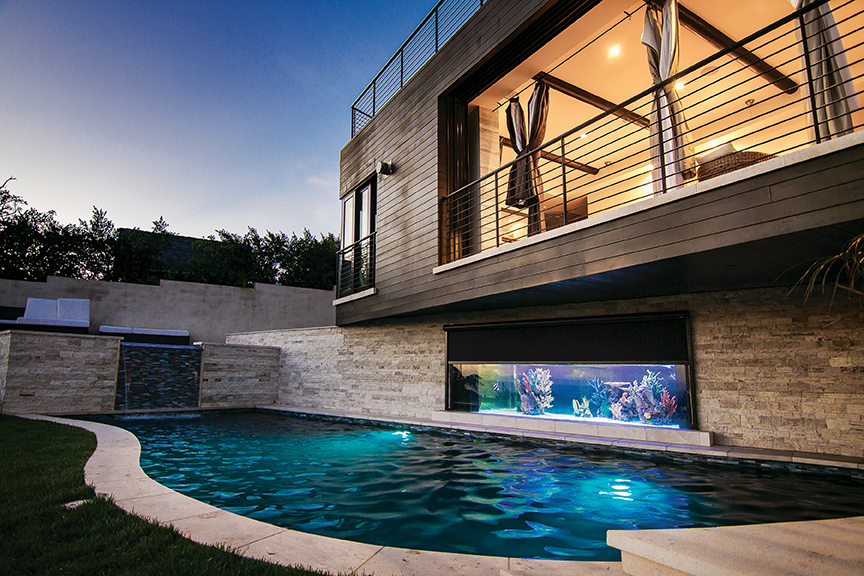
Photo courtesy of Infinity Aquarium Design
Nic Tiemens, co-founder of Los Angeles-based Infinity Aquarium Design, reports, “The installations we’re doing today in high-end residences are more elaborate, both aesthetically and functionally, than those in most public aquariums.” Tiemens’ first taste of the business, as a young minimum-wage employee in Chicago, was the installation of two massive tanks at NBA superstar Michael Jordan’s house. When he and his business partner founded Infinity in 2004, they viewed L.A. as a natural home base, and the firm was featured on HGTV’s Ultimate Aquariums, one of the public’s earliest glimpses into this intriguing specialty. “We’ve branded ourselves as the firm where creativity meets the science of aquariums,” explains the passionate entrepreneur.
Tiemens suggests that homeowners’ increased reliance on interior designers has boosted the residential aquarium business, as those ambitious professionals are constantly looking to enhance spaces with unique water features. Celebrity-favored L.A. interior designer Adam Hunter, who collaborates with Infinity in his luxury residential practice, reports, “Aquariums offer such dramatic appeal to any interior because they can instantly become a beautiful focal point, art piece or topic of conversation.”
Hunter believes aquariums work equally well in both traditional and modern architectural contexts, and the endless options of aquatic environments and species allow designers and aquarists to accommodate virtually any situation. “When you spend hundreds of hours paying attention to every last detail that makes an interior perfect, having an organic, living backdrop provides the ideal contrast to such a structured and scrutinized design,” he explains.
Double-sided tanks are popular and at a Hawaiian-inspired Malibu retreat, Infinity completed a stunning indoor-outdoor poolside aquarium. “From the basement, you can look through the aquarium into the swimming pool, beyond the bluff and out into the ocean,” Tiemens explains of the $80,000 project.
Although nearly 90 percent of the company’s projects are saltwater tanks, Tiemens has observed a sharp uptick in requests for live plant freshwater aquariums as clients become more conscious of sustainability. The company recently completed the largest freshwater planted aquarium in a private U.S. residence for a homeowner aspiring to recreate the work of renowned Japanese aquarist and photographer Takashi Amano.
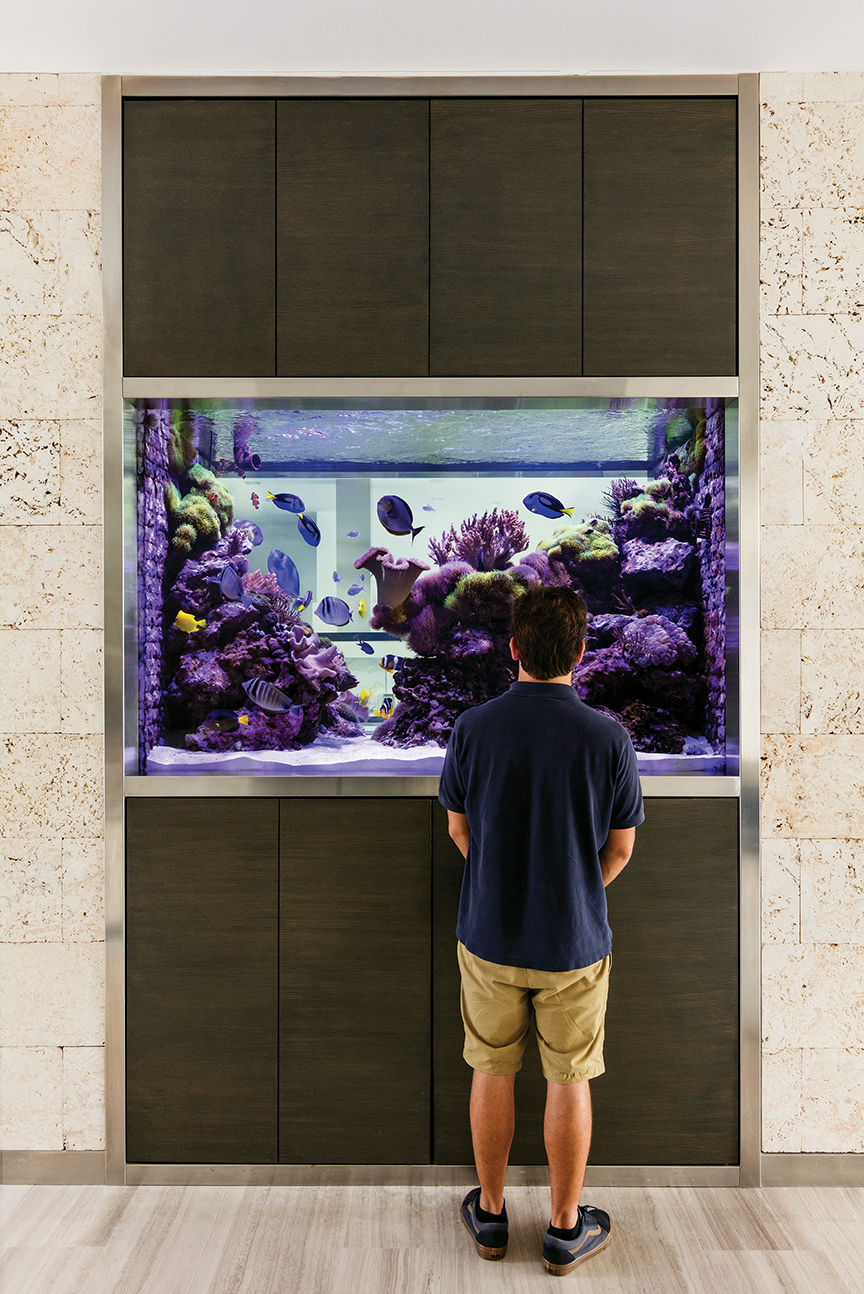
Photo © 2016 Nickolas Sargent All Rights Reserved
Reef Aquaria Design (RAD), located in South Florida, also caters to a demanding luxury residential clientele. Operations Manager J.R. Corvison agrees that public aquariums and a heightened environmental consciousness of the oceans have fueled interest, and states some of RAD’s high-end installations cost more than most people pay for a home. “Those with the means have the ability to commission a piece of dynamic living art showcasing the ocean’s splendor right in their own home,” says Corvison. He reports client enthusiasm for jellyfish aquariums, especially in homes with sleek, modern architecture, as well as burgeoning interest in the aquaculture of fish and live corals.
The stars of Tanked, brothers-in-law Brett Raymer and Wayde King, are the owners of Las Vegas-based Acrylic Tank Manufacturing (ATM). Since their show debuted in 2011, the pair has created over-the-top aquariums for actors Neil Patrick Harris and David Hasselhoff, magicians Penn & Teller, and professional athletes Marshawn Lynch, Dwayne Wade and Shaquille O’Neill.
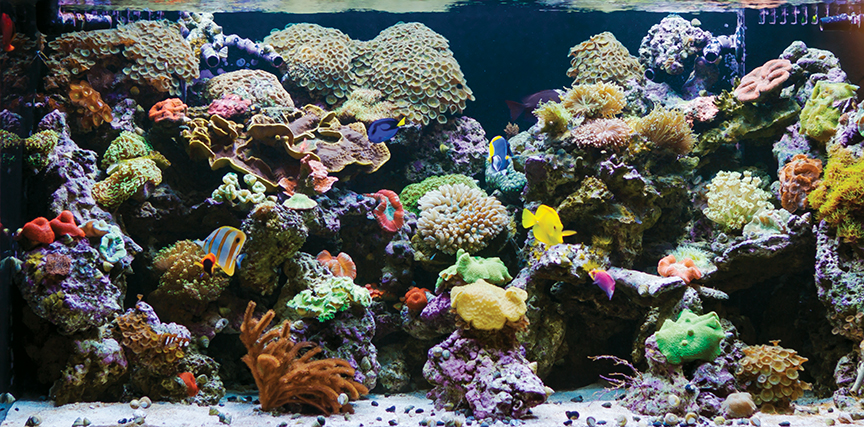
Photo courtesy of Infinity Aquarium Design.
“The popularity of public aquariums has grown over the years, giving people more opportunities to see exotic species, and everybody’s intrigued by fish,” says Raymer, who suggests the ability to maintain live corals and reefs accounts for the popularity of saltwater tanks. “The tanks are educational, soothing and relaxing to look at,” says the enthusiastic King of the hobby’s universal allure, adding, “The colors of fish are incredibly appealing and they all have their own personalities.”
Raymer reports that while it may scratch easier than glass, acrylic has become the state-of-the-art material for extravagant designs because of its ability to be bent and shaped. ATM’s design and installation process begins with an interview of the customer, whether a celebrity or suburban hobbyist. “First we find out what the client has in mind, then turn it over to our artist to create a rendering. Once we get the client’s approval, we go from there,” explains Raymer.
One of the company’s more outrageous projects, scheduled to appear on Tanked later this year, features the third appearance of comedian Tracy Morgan, whose pool house in posh Alpine, New Jersey, will be transformed into a massive 16,000-gallon shark tank designed by ATM. King explains sufficient space, structural soundness and a willingness to take care of the habitat (in addition to capital, of course) are the only limitations to ever-more-elaborate aquariums. ATM’s largest project was a $4.5 million aquarium for a megachurch in Texas, and an upcoming 70,000-gallon project in California will be the largest tank ever installed in a private residence.
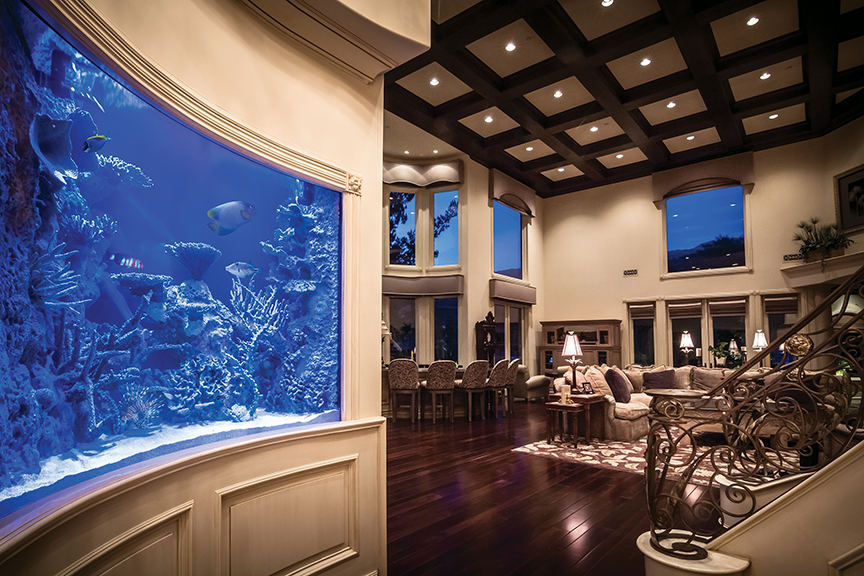
Photos courtesy of Infinity Aquarium Design.
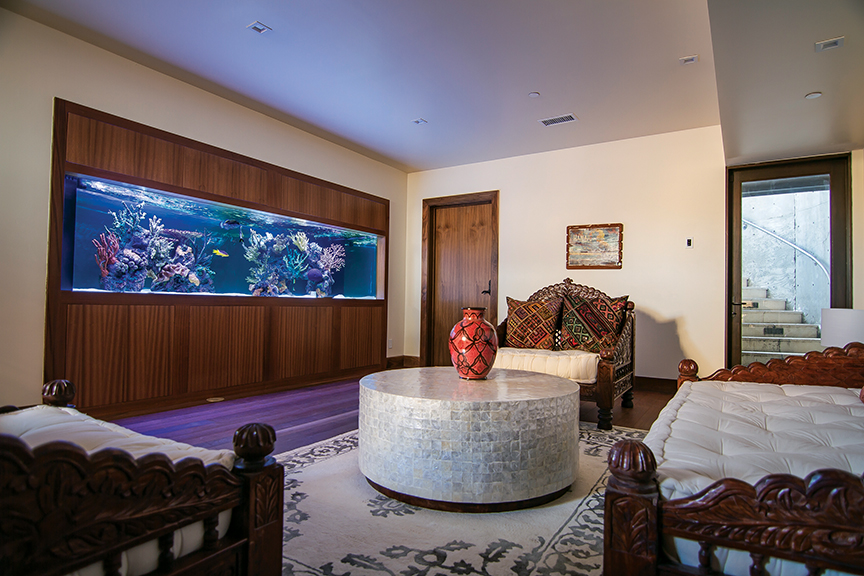
Jay Silber, a partner at Lakewood, New Jersey’s Aqua Creations — which serves metro New York City and beyond — reports affluent clients love the soothing effects of aquariums, while other owners are attracted to the feng shui benefits of having water and fish in a home. “One very wealthy client, he’s a big player whose home has a media room, disco room and everything you could ask for, tells me, ‘Jay, when I entertain, the first place everybody goes is to the tank!’”
Silber reports, “We build aquariums from $20,000 to $100,000, depending on how crazy you want to go, but we concentrate on creating a really interesting environment.” He insists the best installation practice is from the ground up, working with architects and builders to engineer the tank, accommodate proper plumbing and allocate sufficient space for an equipment room.
Compatibility, color and movement are the critical considerations when selecting the assortment of fish, according to Tiemens. “We try to create an underwater display that’s realistic and offers an environment that’s natural for the respective species, one in which every color of the rainbow is presented and where you’re constantly seeing different fish,” he says.
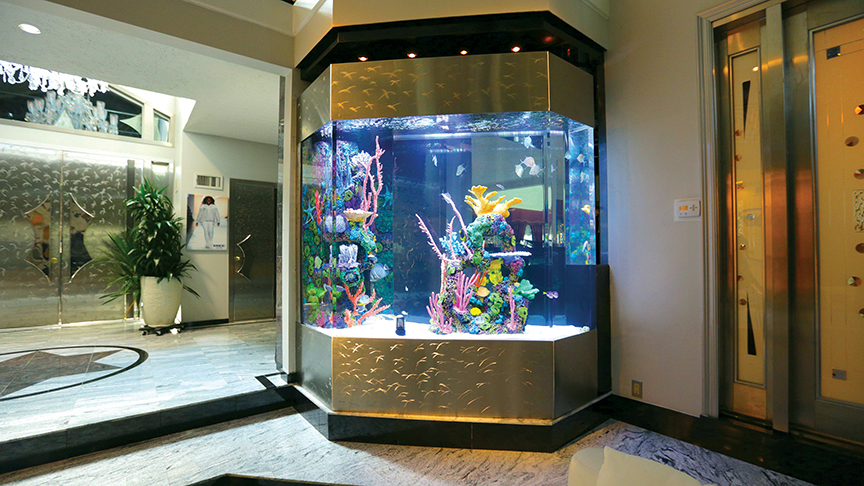
Photo courtesy of Life Aquariums.
Brett Raymer of ATM cautions homeowners, “You need to remember these are live animals … they’re pets, not just decoration, so you can’t just get it set up and forget about it.” He therefore advises clients to enter into a maintenance contract with a reputable company like ATM to ensure proper care. These days, advanced technology allows owners or aquarists to monitor water quality and manipulate pumps from anywhere in the world with the touch of a smartphone.
Acrylic Tank Manufacturing Las Vegas www.acrylicaquariums.com
Aqua Creations Lakewood, NJ www.aquacustomfishtanks.com
Reef Aquaria Design Coconut Creek, FL www.reefaquariadesign.com
Adam Hunter, Inc. Los Angeles www.adamhunterinc.com
Infinity Aquarium Design Los Angeles www.infinityaquariums.com
Not all trends have staying power — some of interior design’s most lasting legacies started out as fads, while other trends seem to have vanished as fast as they appeared. Along with selecting sustainable products, it is important to take a closer look at black finishes, marble in home products, bright colors and geometric patterns.
Three Feel-Good Sustainable Products
Not only does green living reduce the carbon footprint today, but it paves the way for a better tomorrow. For starters, Malvina from Newport Brass exceeds WaterSense requirements while meeting water-saving standards set forth by the California Energy Commission and CALGreen. Meanwhile, the Tinka collection from Les Jardins Solar Lighting features interchangeable solar lighting modules. Not only are they transposable across the entire Les Jardins Solar Lighting line, but the module produces 500 lumens of LED light and up to 200 hours of life per charge. And finally, the LED BUSTER Bulb from Buster + Punch is an innovative eco-friendly LED alternative to traditional filament bulbs and the first to implement novel changes in design. In the end, any of these must-have products not only help the environment, but help us feel good, too.
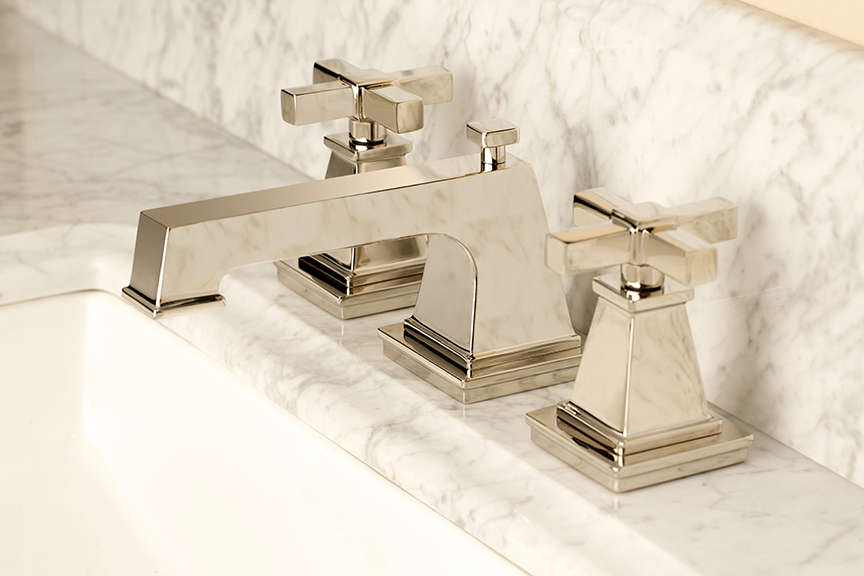
Malvina
Newport Brass
Geometric lines and exact planes come together in Newport Brass’ new Malvina faucet, an engineering marvel inspired by the iconic smooth stucco and concrete of contemporary architecture. Whether it’s the solid-brass rectangular lever or perfectly scaled cross handles, all fixtures are meticulously shaped and expertly finished at Newport Brass’ California facility in order to achieve a striking and precise design. With a deep commitment to sustainable manufacturing processes, Newport Brass takes pride in energy-saving methods that shrink emissions, recycle materials, enhance resources, and lessen waste.
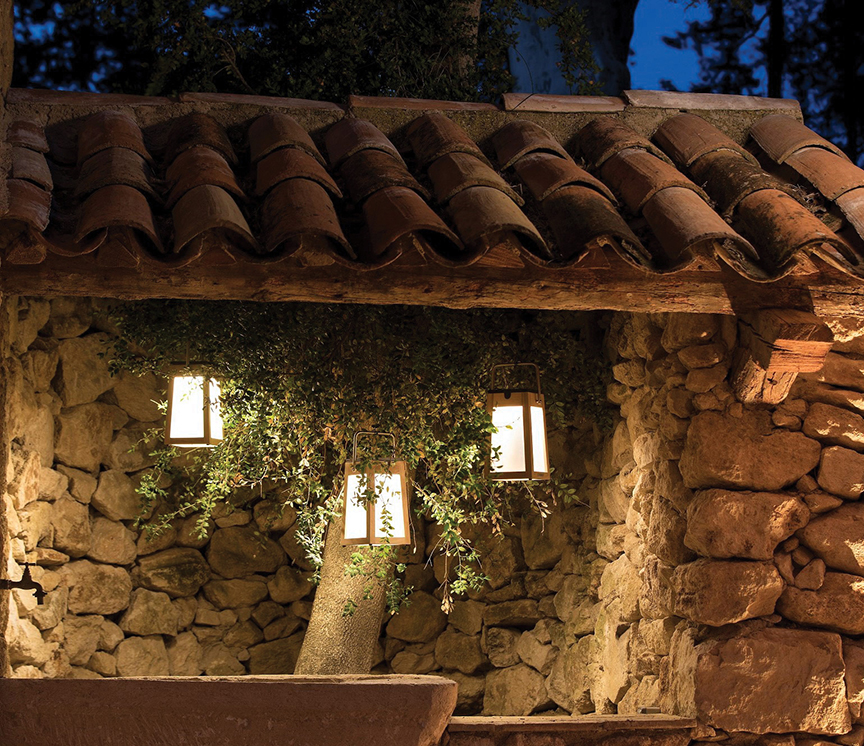
Tinka
Les Jardins Solar Lighting
A true standout in modern design, Tinka brings a whole new meaning to green living. Available in teak or colorful aluminum finishes, the light is a must-have for brightening backyard gatherings, glamping trips and every adventure along the way. The replaceable and interchangeable solar LED module can simply swap out your old solar modules with new ones as our renewable lighting technology evolves. Because our lanterns are designed to be timeless, they can travel with you through life and never end up in a landfill. With dimming capabilities and a motion sensor, a lantern from the Les Jardins Solar Lighting collection is far more than just attractive outdoor lighting: It brings luxury within reach and embraces cutting-edge solar technology at the same time.
LED BUSTER Bulb
Buster + Punch
Magic happens inside the resin light base at the center of the LED BUSTER Bulb. That’s because it performs two incredible functions: a focused spotlight to illuminate surfaces below and a warm ambient glow to light faces and spaces around it. With an E26 base, it can also be used as a direct replacement for standard screw-thread incandescent bulbs. Defining the next evolution in an industry that is undergoing a change in ideals, the LED BUSTER Bulb raises the bar in lighting technologies.
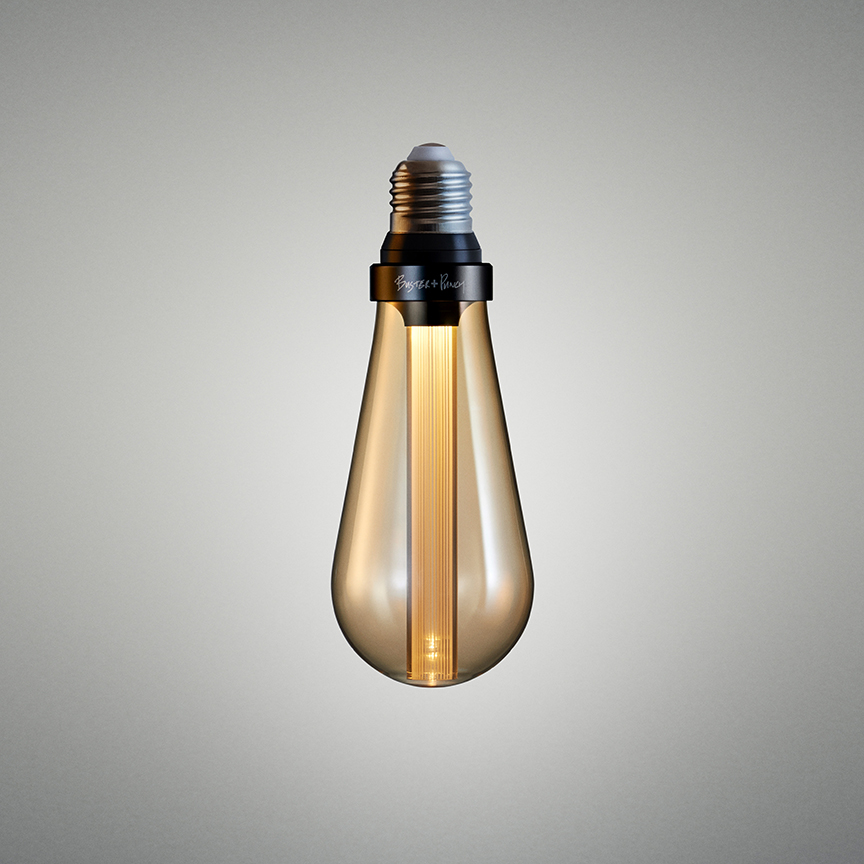
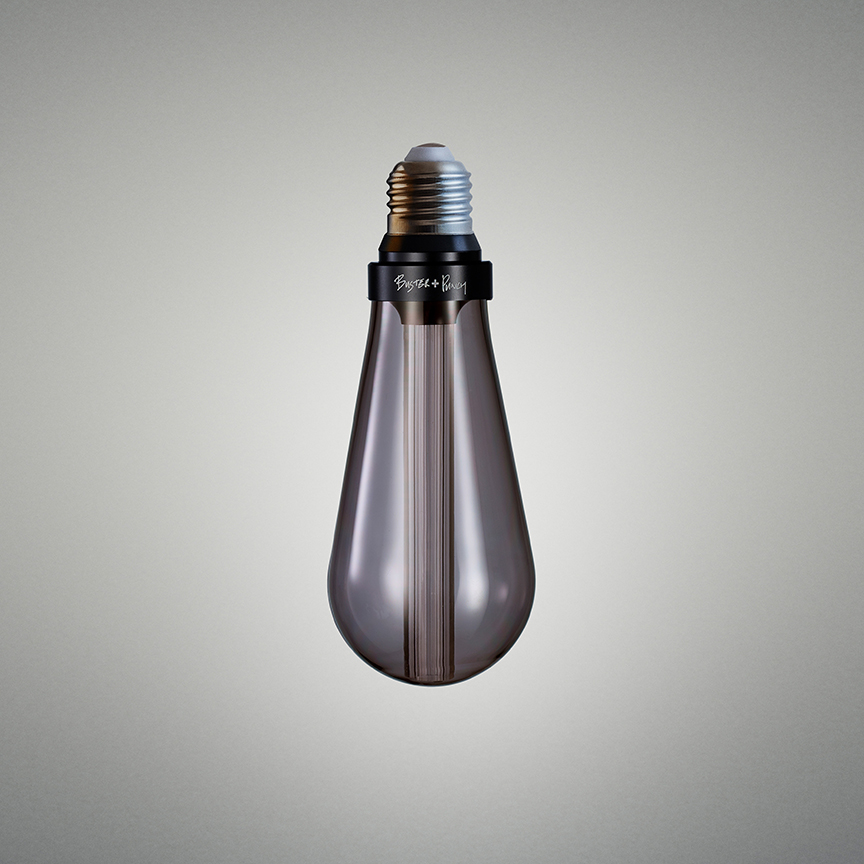
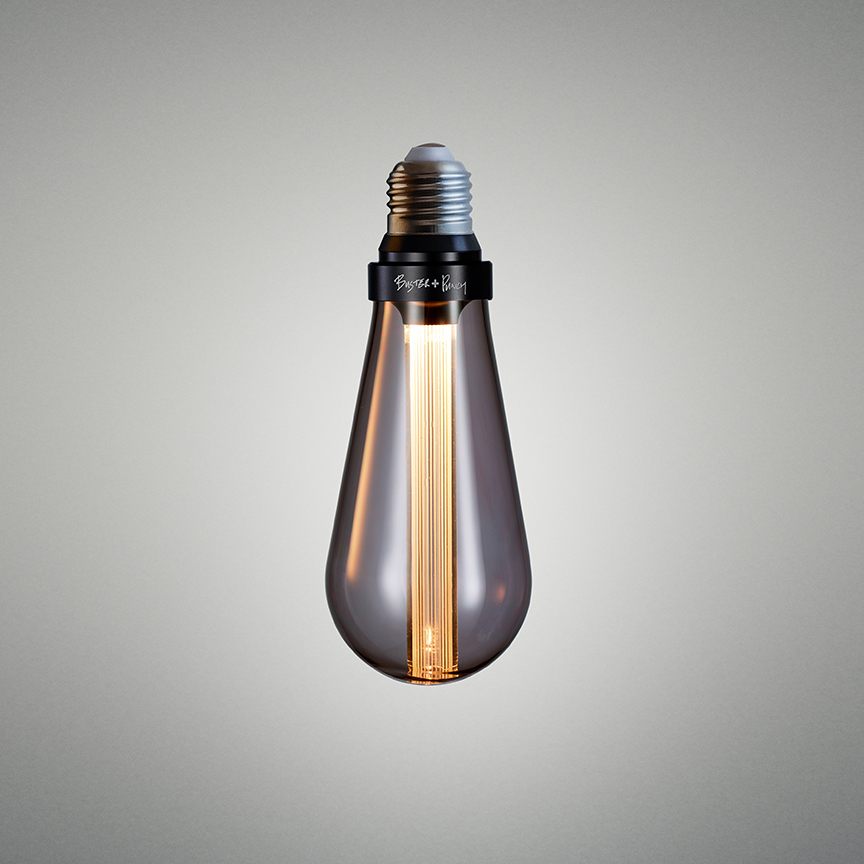
Photos courtesy of DRS and Associates.

Staging your home could open the door for buyers and sellers in more ways than one. Home staging could mean decorating, furnishing and even painting an empty home that is on the market. Staging a home has been referred to as an art form and is usually used as a way to help sellers and buyers understand the possibilities that a home offers.
It is difficult for a buyer to imagine raising a family or spending a cozy holiday in a vacant space. Therefore, home staging allows buyers to imagine what their home could be. Additionally, if a room is staged well that can help a seller pitch the idea of the space as a home. The impersonal feel of an empty house can be quelled by the right coat of paint, properly arranged furniture, and other final touches, such as decor.
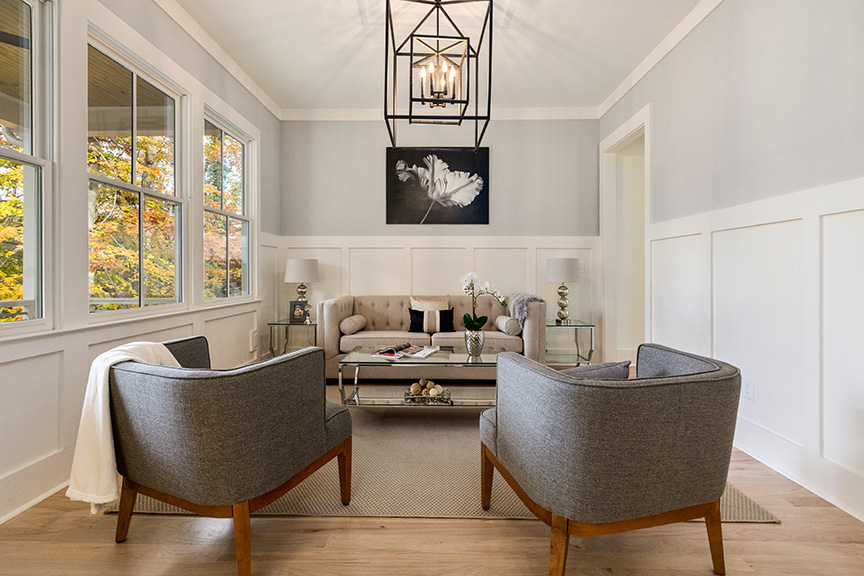
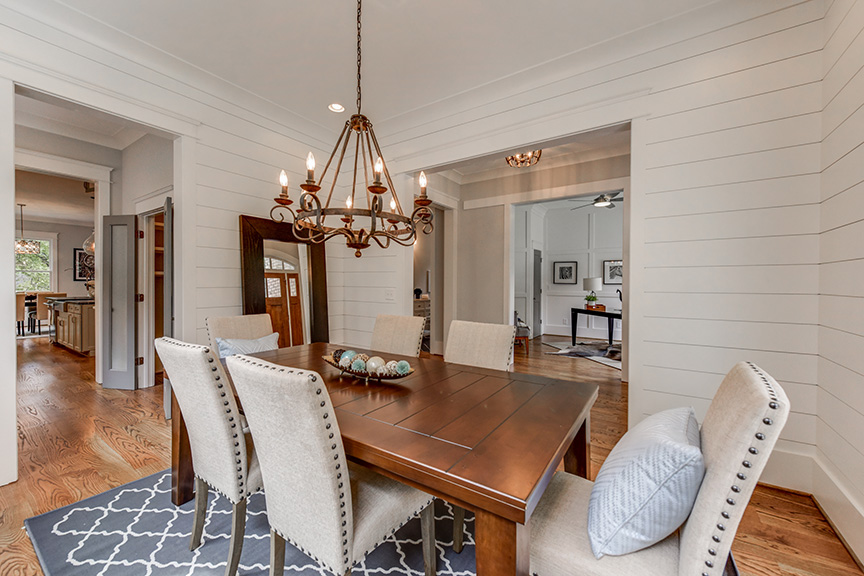
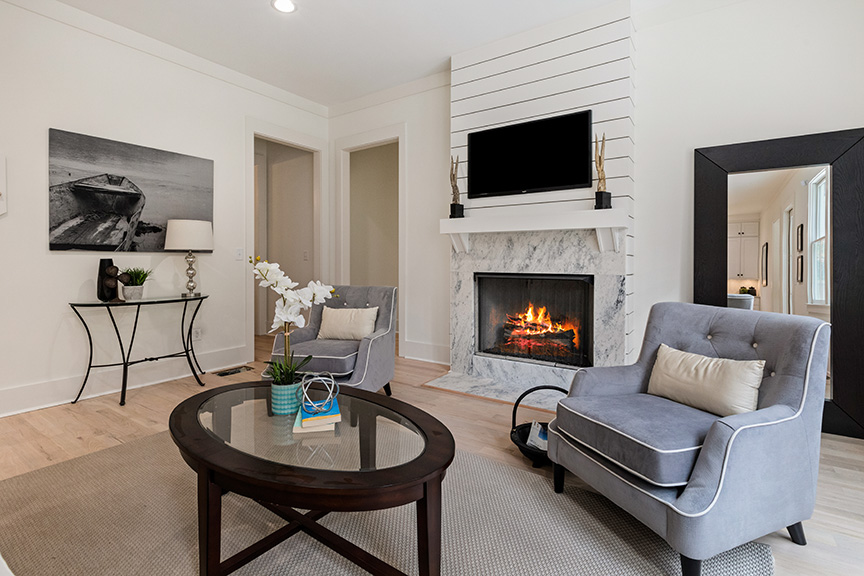

1. Organize and avoid clutter. This will make it easier for a potential buyer to see themselves living in the home.
2. Think fresh and light. Keep blinds and curtains open to let in as much natural light as possible. Also, if any of the rooms in the home are painted a deep exotic or bright neon color then it is best to neutralize each room by having walls painted a nice warm color.
3. Update and repair. Take note of any noticeable or large fixes that need to be made and take care of them early.
4. Don’t forget the exterior. The first impression a potential home buyer will have of a house will be of the exterior, so nice curb appeal is important.
5. The price is worth it. The average cost of a complete staging project is usually much less than your first price reduction. Statistically, homes that have been properly prepared for the market sell before a price reduction is needed.
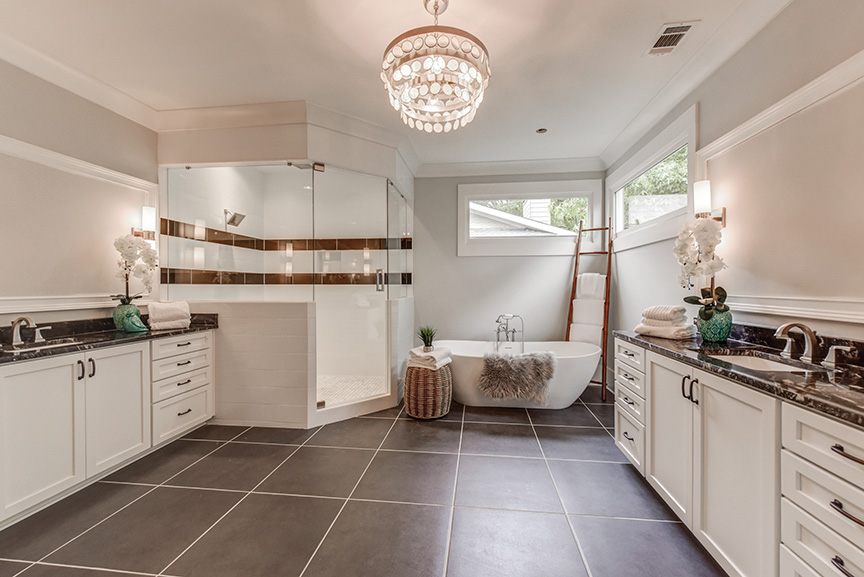
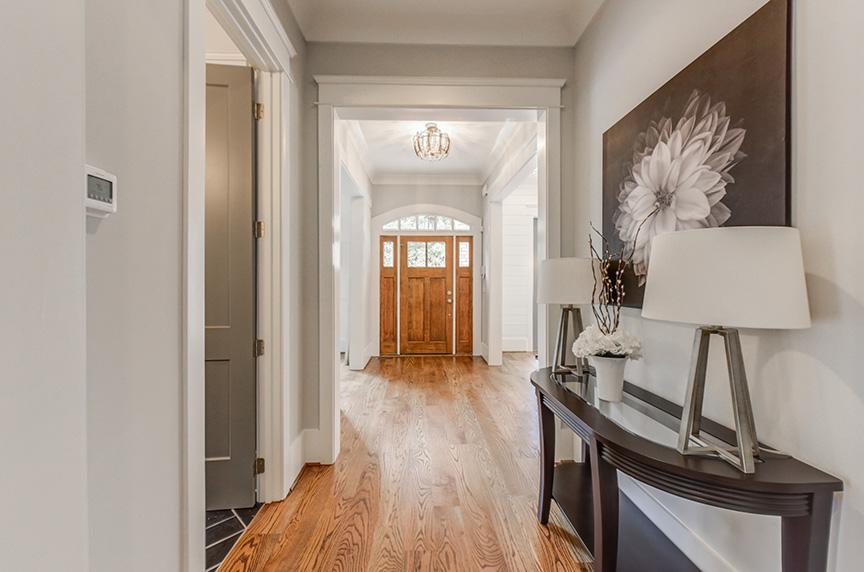
6. Decorating and staging are almost complete opposites. Decorating involves putting the existing homeowners’ tastes and styles into the house, making it personal. Staging involves taking one’s personality out of the house, so the decor is neutral and appealing to the broadest range of potential home buyers.
7. It is best to have your house staged first and then have it listed. Think of the importance of first impressions. The greatest buzz about a house is generated when it is first listed.
8. Although new to the television circuit, home staging has actually been around since the 1970s. In some areas of the country, home staging is as common as open houses. The central states are starting to recognize the value of a staged home, not because it is trendy, but because it works!
9. Do emphasize the upscale and custom features of a home with staging, but DON’T overdo it. Keep it clean lines and simple.
10. Don’t place furnishings or decor that block light or views. Do stage the home with tasteful furnishings and make it easy for prospective buyers to walk straight to amazing ocean, mountain, or island views.
Photos courtesy of Krisztina Bell, No Vacancy Home Staging











